2018 Announcements
December 27, 2018
Prof. Ravishankara takes the long view on climate change
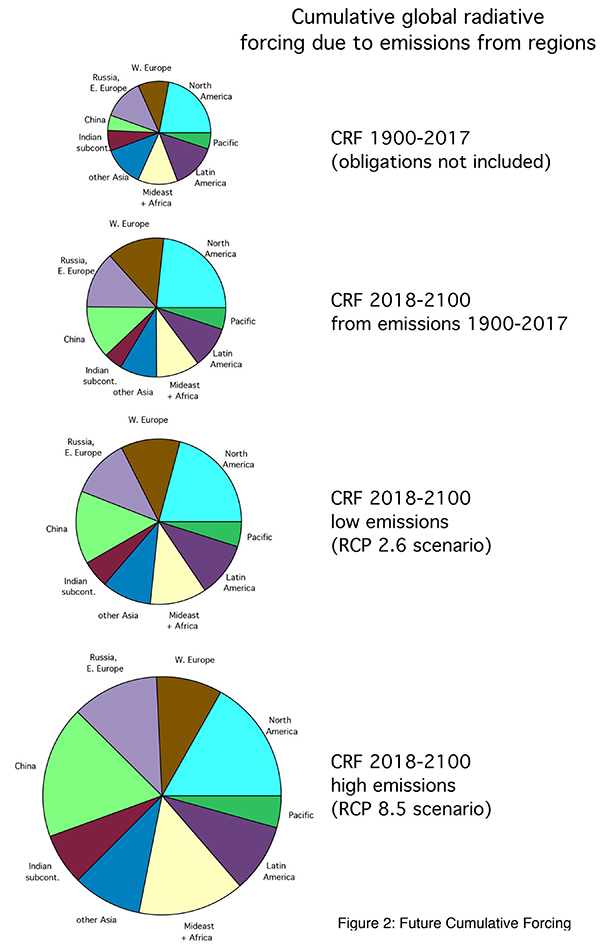
The science is clear that human activities over the last century have contributed to greenhouse-like warming of the Earth’s surface. Much of the global conversation around climate change fixates on what individual countries or regions are contributing to the problem, and what they will do (or not do) to reverse the tide.
But Colorado State University’s A.R. Ravishankara, University Distinguished Professor who holds joint appointments in the departments of chemistry and atmospheric science, says the full picture is longer and more complex than meets the eye. It involves a legacy of past actions, as well as irreversible commitments for the future.
Ravishankara and co-author Daniel Murphy of the National Oceanic and Atmospheric Administration offer a new calculation that provides the long view of what nine different world regions have contributed to climate change since 1900. They also show how that breakdown will likely look by 2100 under various emission scenarios. Their study is in Proceedings of the National Academy of Sciences, Dec. 17.
Read the full Source article, “The full story on climate change requires the long view.”
Above: The pie charts show relative contributions to global warming divided into regions of the world. The enlargements represent the growth of overall cumulative global radiative forcing. CRF is cumulative radiative forcing. RCP is representative concentration pathway, or a modeled emissions scenario based on prior inputs. RCP 2.6 is roughly what was agreed upon during the 2015 Intercontinental Panel on Climate Change, the “Paris Agreement,” in which nations collectively agreed to limit global warming to 1.5 degrees Celsius this century. RCP 8.5 is business as usual, with continued increasing emissions.
December 7, 2018
Xubin Zeng honored as 2018 Outstanding Alum
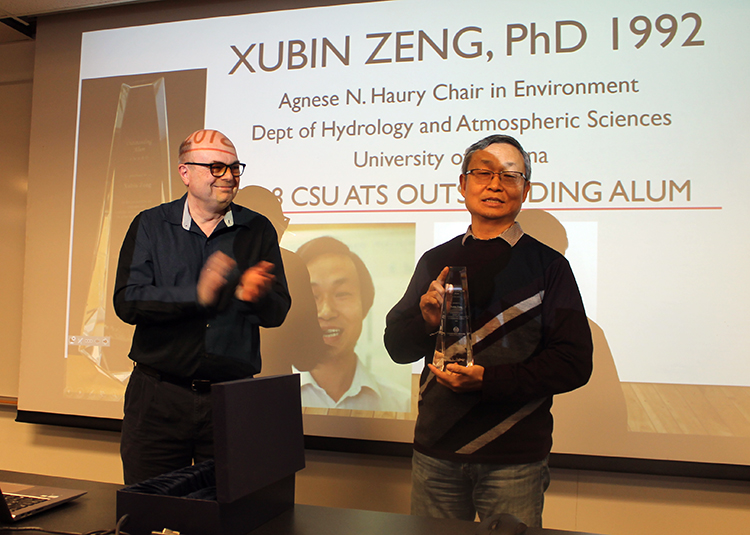
Department Head Jeff Collett presented Xubin Zeng with the 2018 Outstanding Alum Award in a ceremony Dec. 7. Zeng then gave a talk on interface processes in the Earth system. His wife Qingqiu, also an ATS alum, was in attendance.
In a note for the department newsletter, Zeng said, “I am honored by this recognition from ATS – a top program in our field with many distinguished alumni throughout the years. I thank the ATS faculty for inspiring me and raising me up to stand on their shoulders.”
Zeng is a professor in the Department of Atmospheric Sciences at the University of Arizona, where he holds the Agnese N. Haury Endowed Chair in the Environment and serves as director of the UA Climate Dynamics and Hydrometeorology Center. Zeng co-founded the University of Arizona’s Hydrometeorology M.S. and Ph.D. program, the first such program in the U.S.
Through over 170 peer-reviewed papers, Zeng is well known for his research on land-atmosphere-ocean interface processes, weather and climate modeling, hydrometeorology, remote sensing, and nonlinear dynamics. His research products – including computer models, algorithms and value-added global datasets – have been used by major national and international research centers and numerous groups worldwide. Zeng’s work on chaos has advanced our understanding of this important field and is widely referenced even outside of atmospheric science.
Zeng is deputy PI of a newly selected $30 million NASA project on the understanding of aerosol-cloud-weather interactions through measurements using two aircraft in formation over the western North Atlantic. Among other recognitions, Zeng is a fellow of the American Meteorological Society and recipient of a 2014 Special Creativity Award from the National Science Foundation.
Zeng received his Ph.D. from the department in 1992, advised by Roger Pielke. The title of his dissertation was “Chaos Theory and Its Application in the Atmosphere.”
November 30, 2018
ATS reception for alumni, faculty, students and friends at AMS annual meeting
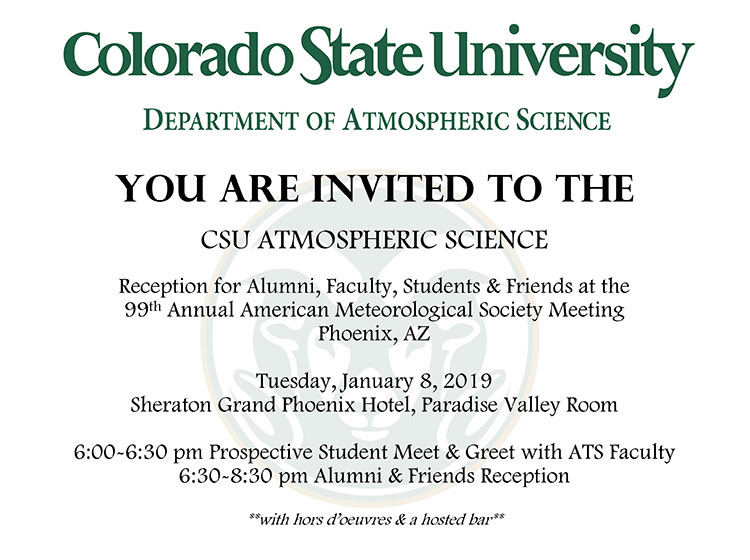
ATS will host a reception for alumni, faculty, students and friends at the 99th Annual American Meteorological Society Meeting in Phoenix, Ariz., on Jan. 8. The reception will be held at the Sheraton Grand Phoenix Hotel Paradise Valley Room. Hors d’oeuvres will be served, and there will be a hosted bar. A prospective student meet and greet will take place 6-6:30 p.m., followed by the alumni and friends reception from 6:30-8:30 p.m.
November 29, 2018
Researchers rise to challenge of predicting hail, tornadoes three weeks in advance
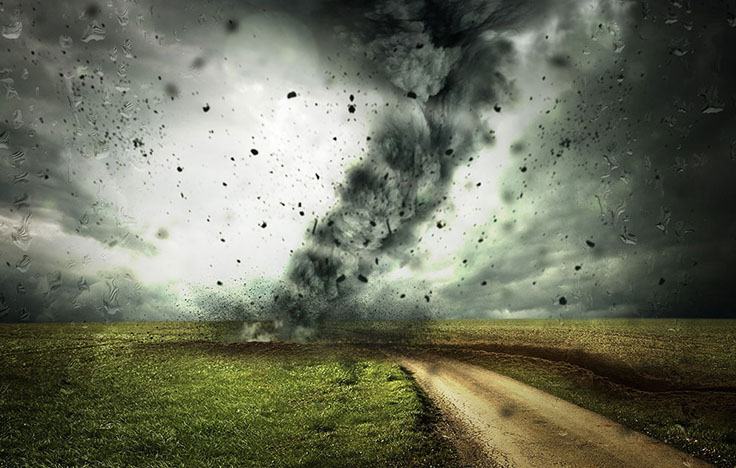
People living in Kansas, Nebraska and other states in the Plains are no strangers to tornadoes and hail storms – among the most costly and dangerous weather threats in the United States.
Meteorologists and computer models do a good job forecasting thunderstorm activity up to a week in advance. Scientists can also read long-term, seasonal signals of severe weather months in advance. But there’s a middle ground – a prediction lead time of about 2 to 5 weeks – that’s sorely lacking in current forecasting capabilities.
In a new paper in Journal of Geophysical Research: Atmospheres, Colorado State University atmospheric scientists demonstrate the ability to make skillful predictions of severe weather across the Plains and southeastern United States, including hail and tornadoes, in that coveted 2-to-5-weeks-in-advance period. To do it, they use a reliable tropical weather pattern called the Madden-Julian Oscillation, which can influence weather in distant parts of the Earth, including the U.S., by sending out powerful atmospheric waves.
“When the Madden-Julian Oscillation is active, it is capable of setting up atmospheric patterns that are favorable for severe weather across the United States over the next several weeks,” explained Cory Baggett, research scientist in atmospheric science and the paper’s lead author. “We have found that an active Madden-Julian Oscillation, which periodically goes around the equator in 30 to 60 days, is a really good source of predictability on these subseasonal time scales.” Atmospheric scientists typically consider “subseasonal” to mean about three weeks to three months in advance.
Read the full Source article, “Researchers rise to challenge of predicting hail, tornadoes three weeks in advance.”
November 28, 2018
2018 turns out to be an above-average hurricane season
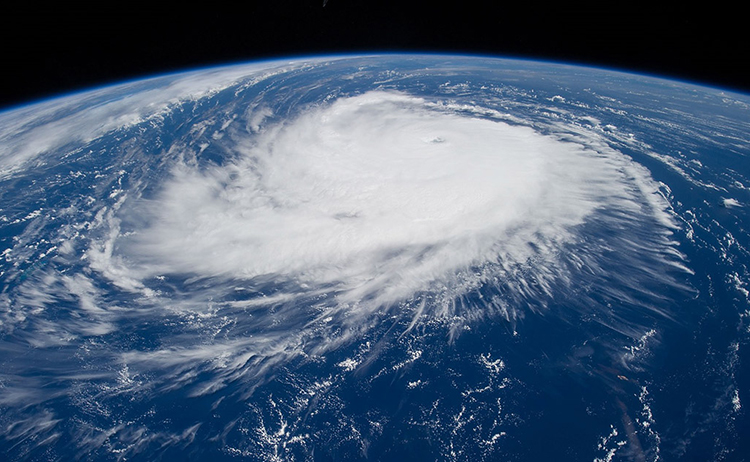
The 2018 hurricane season ended up slightly above average – more active than was predicted by the CSU Tropical Meteorology Project forecast team’s later updates issued in June, July and August. Of most note during the 2018 Atlantic hurricane season were Hurricanes Florence and Michael, which brought death and destruction to the Carolinas and Florida Panhandle and other parts of the southeastern United States, respectively.
“The 2018 Atlantic hurricane season was above-average for numbers of named storms and hurricanes, and near-normal for the number of major (Category 3+ on the Saffir-Simpson Scale) hurricanes. Overall, our first seasonal forecast issued in early April verified quite well, while updates issued in June, July and August underestimated Atlantic hurricane activity,” said Phil Klotzbach, lead author of the forecast. Seasonal Accumulated Cyclone Energy (ACE) was approximately 140 percent of the 1981-2010 median. Much of the activity that occurred during the season occurred outside of the tropics. Six of the 15 named storms that formed in 2018 were initially classified as sub-tropical.
The report summarizes all tropical cyclone activity in the Atlantic basin during the 2018 hurricane season and compares the team’s seasonal and two-week forecasts to what occurred.
Read the full Source article, “Researchers under-predicted a slightly above-average 2018 Atlantic hurricane season.”
November 21, 2018
Scott Shrake will explain why entrepreneurial mindset is important for scientists
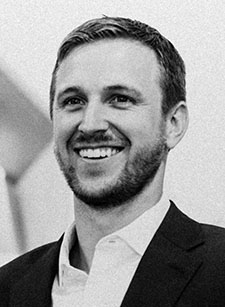
Entrepreneurship doesn’t live in business schools alone. An entrepreneurial mindset can be developed in innovators from all backgrounds, disciplines, and skillsets – especially scientists and engineers. Scientists, engineers, and designers are powerhouses of innovation, and those with an entrepreneurial mindset are focused on more than solving technical problems, they’re consistently looking for ways to create value and transform the world. Scott Shrake, director of CSU’s Institute for Entrepreneurship, will discuss the keys to developing an entrepreneurial mindset and the importance of fostering that mindset in the sciences at FORTCAST’s next What’s Brewing in Weather and Climate talk.
As director of CSU’s Institute for Entrepreneurship, Shrake promotes entrepreneurship, innovation, product development, and commercialization for students, faculty, and community members across Northern Colorado. Shrake’s passion is social impact and launching innovative, cutting-edge programming to promote venture creation and entrepreneurial mindset at universities across the globe.
Discussion will begin 6:30 p.m. Tuesday, Nov. 27, upstairs at Tap & Handle. CSU students, bring your ID for $2 off drafts.
Contact amsfortcast@gmail.com with questions.
November 16, 2018
WE-CAN recap: Cracking the chemistry of wildfire smoke
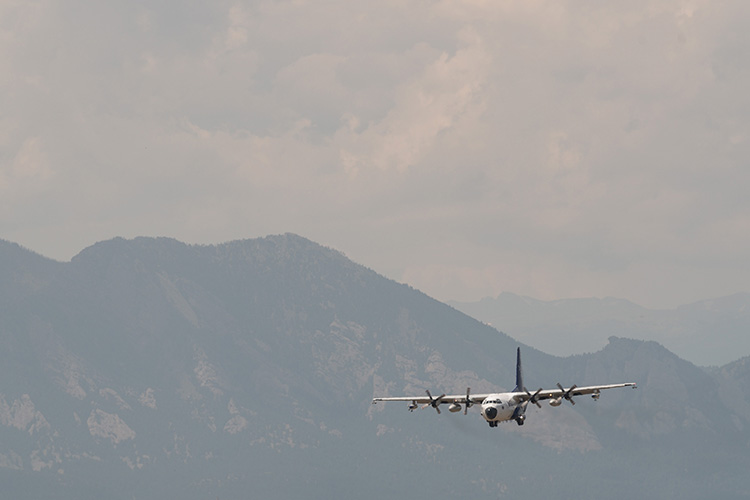
A team of Colorado State University scientists led by Assistant Professor Emily Fischer spent the summer flying into wildfire smoke to analyze its composition in the largest, most comprehensive campaign of its kind to date. Five universities and the National Center for Atmospheric Research (NCAR) collaborated on the Western Wildfire Experiment for Cloud Chemistry, Aerosol Absorption and Nitrogen, or WE-CAN, which involved a C-130 research aircraft loaded with scientific instruments and 15 scientists per flight.
Based in Boise, Idaho, the flight crew flew 16 six-hour missions to collect smoke samples and data. Boise was chosen because almost every August there is a wildfire burning within a two-hour flight of the city. The WE-CAN team included around 100 scientists and engineers, with many of them stationed on the ground, monitoring fires, smoke and weather to guide the plane.
Fischer directed the campaign from the cockpit.
“The visibility was so poor that we had to use a completely different flight planning strategy than I anticipated,” she said. “Decisions in the cockpit were essential.”
The campaign’s objectives were to determine what the smoke is made of, how it changes over time and as it travels, how it affects clouds, how the type of fuel affects smoke composition, and how the fire’s temperature affects the smoke’s chemistry. The results will bring insights on air quality, health impacts, weather and climate.
Read the full Source article, “WE-CAN seeks to crack chemistry of wildfire smoke.”
November 15, 2018
Faith Groff wins Excellence in Research Award at Graduate Student Showcase
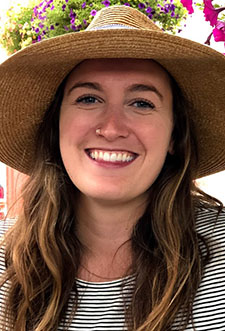
M.S. student Faith Groff was one of three recipients of the Excellence in Research Award at the 2018 Graduate Student Showcase on Nov. 13. Walter Scott, Jr. College of Engineering graduate students presented 54 research posters, and Groff’s was judged to be one of the top three. She was selected for the college-sponsored award for her poster, “Analysis of Tropospheric Gravity Waves in a Mesoscale Convective System.”
In response to the award announcement, Groff said, “I would like to thank my advisor, Russ Schumacher, and the Schumacher research group.”
November 14, 2018
Researchers overcome challenges to collect new typhoon observations
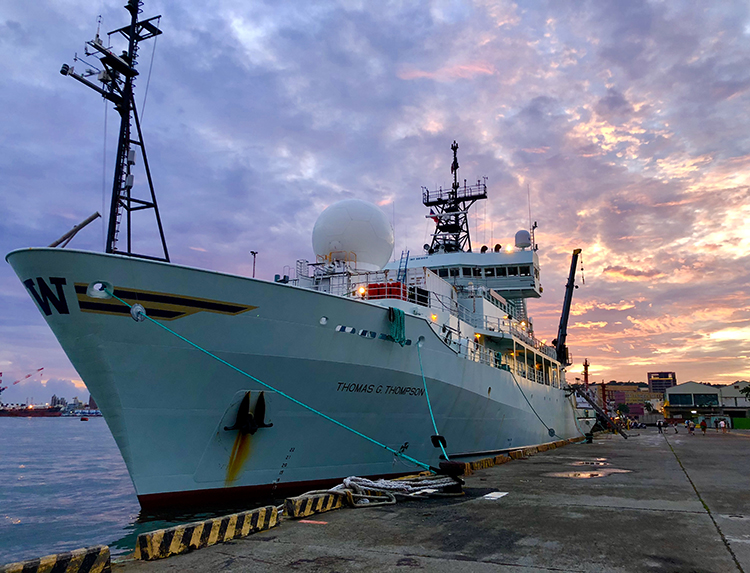
As field researchers know, sometimes the science you set out to do is not what you end up doing. But the drive for knowledge is unwavering, and scientists find a way to get the job done, even if it means changing course, maneuvering bureaucratic hurdles and waiting out setbacks. Flexibility is key to field campaigns, and sometimes the reward is in the unexpected discoveries.
One team of CSU scientists can attest to this recent experience. Department of Atmospheric Science researchers set sail on U.S. research vessel the R/V Thomas G. Thompson in August and September to study precipitation in the tropical west Pacific. Their project, the Propagation of Intra-Seasonal Tropical OscillatioNs, or PISTON, seeks a better understanding of precipitation processes in this area, in order to better understand weather across the Maritime Continent, in southeastern continental Asia, and even in the U.S.
“PISTON had lots of challenges because it was a complex, international experiment. But many of the challenges we faced come with the business of doing this type of science,” said Professor Steven Rutledge, lead principal investigator for PISTON’s atmospheric component. “In the end, it all worked out.”
A complex set of factors contribute to tropical weather, requiring PISTON to be an extensive field campaign involving intensive numerical modeling and observation. Fourteen universities and several national and international organizations collaborated on the project, with funding for the U.S. portion provided by the Office of Naval Research.
Read the full Source article, “Researchers overcome challenges to collect new typhoon observations.”
Photo at top: The R/V Thompson docked in Kaohsiung, Taiwan.
November 13, 2018
Eric Maloney and Ilana Pollack commended for research at All-College Meeting
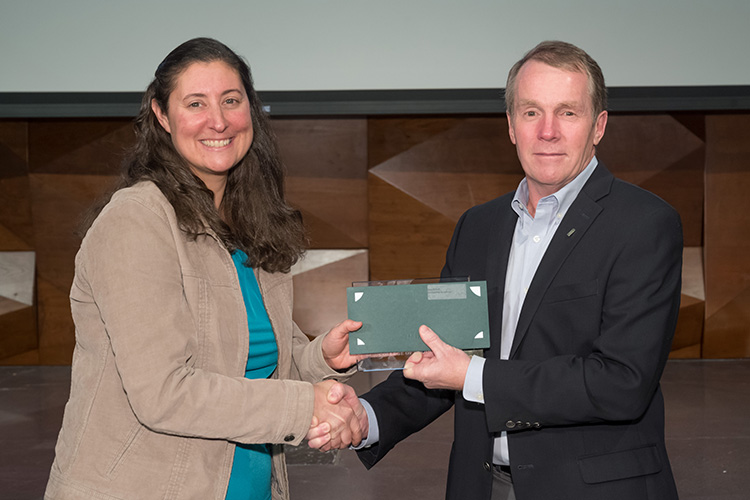
Professor Eric Maloney and scientist Ilana Pollack were recognized with awards at the Walter Scott, Jr. College of Engineering All-College Meeting Nov. 8. Maloney received the George T. Abell Outstanding Research Faculty Award, and Pollack received the Outstanding Researcher Award.
This year’s award winners were selected by a committee comprised of last year’s winners. Nominations were submitted by colleagues and staff of the college’s eight departments and programs.
Assistant Professor Emily Fischer nominated Pollack for the award. Her nomination letter spoke of Pollack’s integral, first-of-its-kind work on the multi-million dollar NSF project WE-CAN, and her dedication to teamwork and mentoring.
“Ilana’s mix of talent and expertise is rare. She is a meticulous atmospheric chemist, and she is also a master of logistics. She is a true team player, and that is why she is so deserving of this award.”
Pollack was grateful for the award.
“It was truly an honor to be recognized for my research contributions and for my many roles and responsibilities,” she said.
Maloney received his distinction “for groundbreaking work in the prediction of weather extremes weeks in advance.”
“It is very humbling and satisfying to be given this honor. I would not be where I am today without the outstanding faculty, students, and staff in the Atmospheric Science department,” Maloney said.
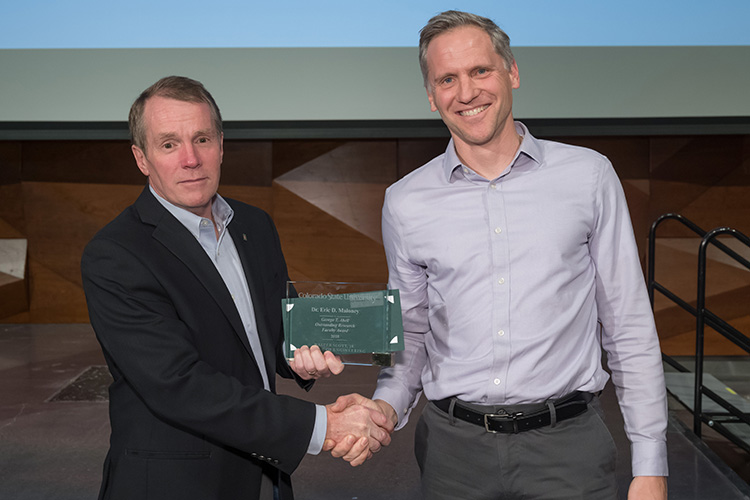
Walter Scott Jr. College of Engineering Dean David McLean presents the George T. Abell Outstanding Research Faculty Award to Professor Eric Maloney at the All-College Meeting on Nov. 8.
October 25, 2018
NASA chooses Sue van den Heever to co-chair Science Advisory Group
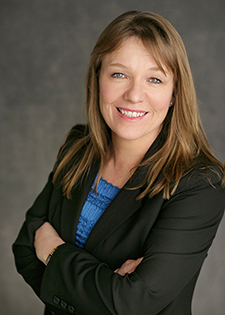
Professor Sue van den Heever has been appointed to co-chair NASA’s Science Advisory Group to guide the implementation of the Decadal Survey study of aerosol and clouds, convection, and precipitation. The advisory group will serve as the study’s primary connection to the wider science and applications communities.
“Sue was selected for this role due to her expertise and stellar international reputation in the field,” said Atmospheric Science Department Head Jeff Collett. “This is a high-profile, national appointment where she will have important input on NASA’s future activities observing aerosols, clouds, convection and precipitation.”
NASA chose national and international leading scientists and application practitioners in the field of aerosol and clouds, convection, and precipitation (A-CCP) for the Science Advisory Group. They were recruited from the academic community and government agencies. The advisory group will provide advice on the direction of NASA’s A-CCP study, critically review the study’s outputs, communicate the study’s aspirations to the wider science and applications communities, and build partnerships between international science communities and the U.S. A-CCP community.
October 24, 2018
Atmospheric scientists to weather the stormiest place on Earth
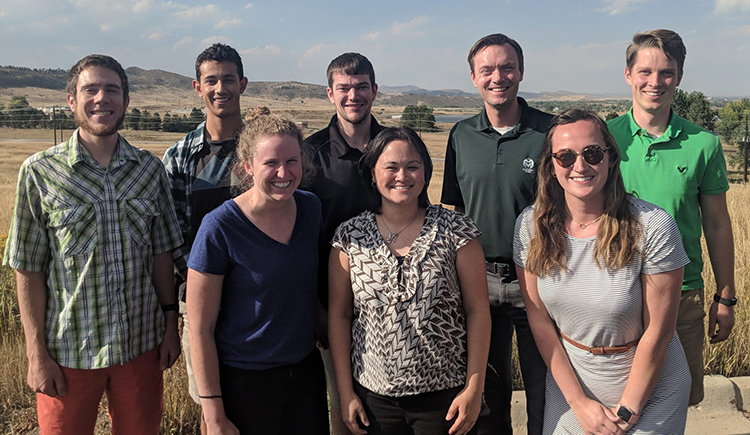
In 2006, Kristen Rasmussen read a paper titled, “Where are the most intense thunderstorms on Earth?” – and she was hooked.
The answer was a sparse region in Argentina’s Andean foothills. Rasmussen, then a University of Washington graduate student, flung herself into studying the monstrous storms that darken subtropical South American skies: their structure, their genesis, and why they occur there, and not elsewhere.
Now a Colorado State University assistant professor in the Department of Atmospheric Science, Rasmussen will finally get to stand under those very skies, putting her hypotheses to the test.
Rasmussen is a key contributor to a $30 million, National Science Foundation-funded field campaign, launching Nov. 1, aimed at discovering why thunderstorms in this particular region of Argentina are among the most extreme in the world. The scientists will help improve the knowledge and prediction of violent storms in this part of the world, as well as for severe weather in general.
“It’s very exciting,” Rasmussen said. “I have studied these storms for over 10 years, but never seen one in person. I’m thrilled to go down to the field with great colleagues and instruments, and sample some of the most extreme thunderstorms on Earth.”
Read the full Source story, “Atmospheric scientists to weather the stormiest place on Earth.”
Photo: Members of the CSU RELAMPAGO team. Back row: Nathan Kelly, Jeremiah Piersante, Erik Nielsen, Russ Schumacher, Zachary Bruick. Front row: Stacey Hitchcock, Kristen Rasmussen, Faith Groff.
October 22, 2018
National Weather Service forecaster to speak at FORTCAST event Oct. 30
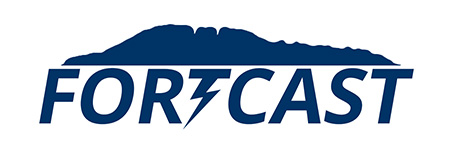
National Weather Service forecaster William Mokry, currently based in Cheyenne, will talk about his experience with the NWS at the next installment of FORTCAST’s What’s Brewing in Weather and Climate series. Mokry’s interests include geospatial analysis, environmental science, hydrology, radar meteorology, decision support services and hydrometerology. He received his M.S. in Atmospheric Sciences from the University of North Dakota.
Discussion will begin 6:30 p.m. Tuesday, Oct. 30, upstairs at Tap & Handle. Please RSVP here. CSU students, bring your ID for $2 off drafts.
Contact amsfortcast@gmail.com with questions.
October 18, 2018
Xubin Zeng chosen as 2018 ATS Outstanding Alum
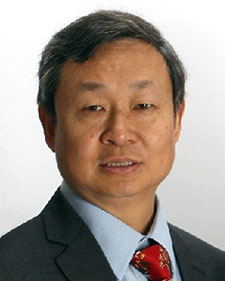
Xubin Zeng has been selected as the 2018 CSU ATS Outstanding Alum. Zeng received his Ph.D. from the department in 1992, advised by Roger Pielke. The title of his dissertation was “Chaos Theory and Its Application in the Atmosphere.”
Zeng is a professor in the Department of Atmospheric Sciences at the University of Arizona, where he holds the Agnese N. Haury Endowed Chair in the Environment and serves as director of the UA Climate Dynamics and Hydrometeorology Center. Zeng co-founded the University of Arizona’s Hydrometeorology M.S. and Ph.D. program, the first such program in the U.S.
Through over 170 peer-reviewed papers, Zeng is well known for his research on land-atmosphere-ocean interface processes, weather and climate modeling, hydrometeorology, remote sensing, and nonlinear dynamics. His research products – including computer models, algorithms and value-added global datasets – have been used by major national and international research centers and numerous groups worldwide. Zeng’s work on chaos has advanced our understanding of this important field and is widely referenced even outside of atmospheric science. Zeng is deputy PI of a newly selected $30 million NASA project on the understanding of aerosol-cloud-weather interactions through measurements using two aircraft in formation over the western North Atlantic. Among other recognitions, Zeng is a fellow of the American Meteorological Society and recipient of the 2014 Special Creativity Award from the National Science Foundation.
Zeng’s award will be presented during the ATS/CIRA colloquium Dec. 7.
October 17, 2018
Anna Hodshire and Kai-Chih Tseng awarded scholarships
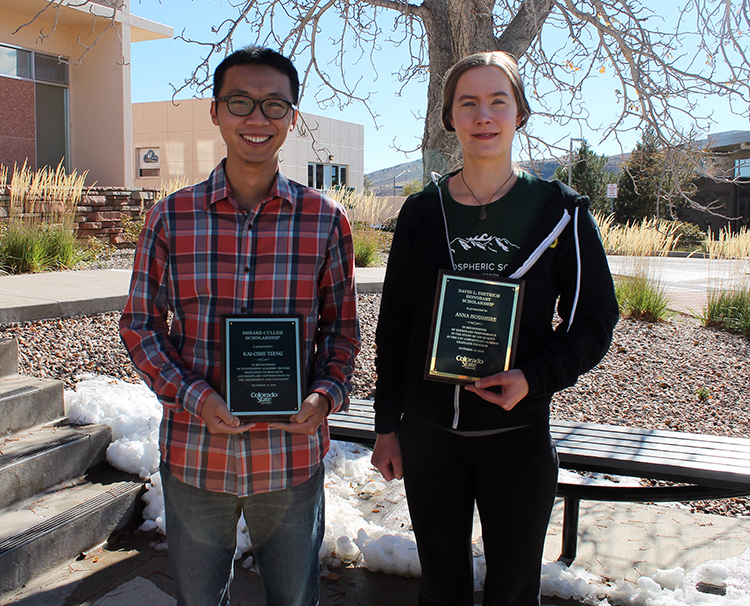
Anna Hodshire was presented with the David L. Dietrich Honorary Scholarship, and Kai-Chih Tseng was given the Shrake-Culler Scholarship in a ceremony Oct. 16. Both recipients were unaware of their selection until the announcements by their advisors during the presentation.
The Dietrich Scholarship, funded each year by Fort Collins-based Air Resource Specialists, Inc., is given in honor of retired ARS President David Dietrich. The award goes to a CSU student who has demonstrated outstanding ability in air quality research and education. Hodshire was nominated by her advisor, Associate Professor Jeff Pierce.
“Anna’s done excellent work on particle formation and growth as well as on the properties of smoke aerosol. She has a great scientific curiosity and work ethic that allows her to excel at many projects. Anna is also growing to be a team leader in coordinating researchers across related projects. I am very fortunate to work with her!” Pierce said after the presentation.
The Shrake-Culler Scholarship is awarded annually to a senior Ph.D. student. The student must have passed their preliminary exam, have a GPA of 3.5 or above, and demonstrate a strong work ethic and enthusiasm for higher education. Tseng’s advisors, Professor Eric Maloney and Associate Professor Elizabeth Barnes, nominated him for the award.
“Kai-Chih is an incredibly creative graduate student. Some of the novel diagnostics he has developed related to tropical-extratropical interactions are now being used by others in the field,” Maloney said following the ceremony.
“Kai-Chih is one of the hardest working and creative graduate students we have had the pleasure of working with. All of his papers have been driven by his curiosity, and I think most of his collaborators would agree that we are just lucky to be along for the ride,” Barnes said. “His work is exemplary, and he has shown no fear in using any tool necessary to test his hypotheses. Since arriving, he has utilized reanalysis, climate model output, ECMWF forecast system hindcasts and an idealized model (i.e. a linearized baroclinic model).”
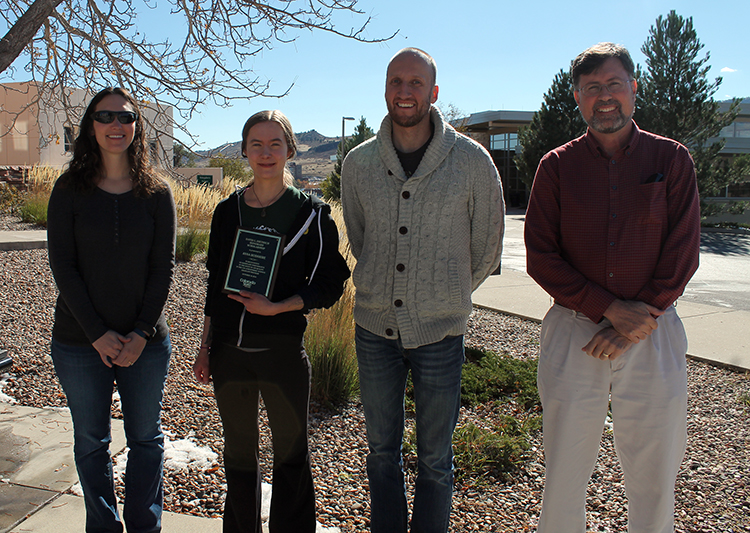
Joe Aldhoch, right, and Jessica Ward, left, from Air Resource Specialists, were on hand for presentation of the Dietrich Scholarship to Anna Hodshire, second from left, on Oct. 16. The scholarship is given in honor of retired ARS President David Dietrich. Hodshire’s advisor, Jeff Pierce, second from right, nominated her for the award.
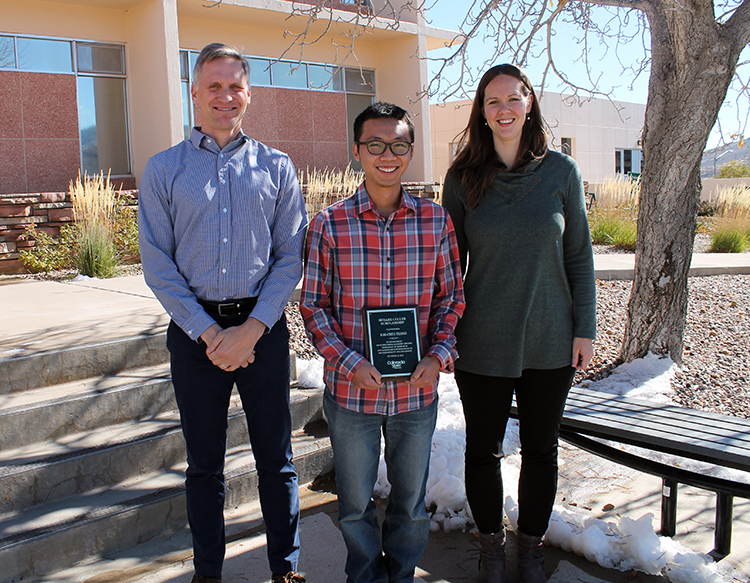
Kai-Chih Tseng, center, was nominated for the Shrake-Culler scholarship by his advisors, Eric Maloney, left, and Elizabeth Barnes, right.
October 15, 2018
Teen Science Café explores how beavers change landscapes
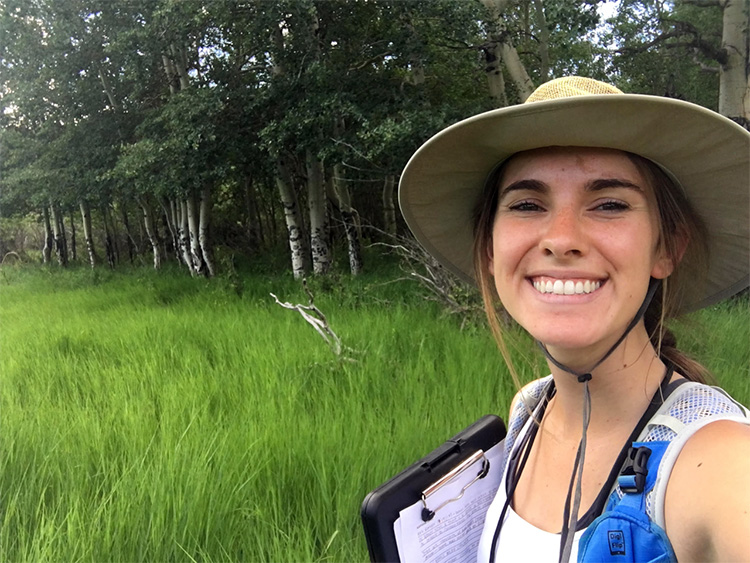
Before Europeans settled North America, an estimated 60 to 400 million beavers lived from the deserts of northern Mexico to the arctic tundra of Canada. Beavers were important engineers of wetlands and valley bottoms before being trapped to near extinction in the 19th century. With changing laws and ecosystem dynamics, where are the beavers today? At the next Teen Science Café, Juli Scamardo, a graduate student studying fluvial geomorphology in CSU’s Department of Geosciences, will talk about what environments are important to beavers, what ecosystem factors are affecting beavers in Rocky Mountain National Park, and what people can do to help beavers and the environment here in Colorado.
When: 5-7 p.m., with the presentation starting at 5:30 p.m., Wednesday, Nov. 14
Where: Everyday Joe’s Coffee House, 144 S. Mason St., Fort Collins
Presenter: Juli Scamardo from CSU’s Warner College of Natural Resources
RSVP to the Nov. 14 Teen Science Café here.
Nov. 14 Teen Science Café flier
The Front Range Teen Science Café is part of a larger national network of science cafés for teens. ESMEI’S Teen Science Café brings scientists and teens together for a conversation about science in a local coffee shop. A primary goal of the café is for teens to increase their understanding of the nature of science and to develop a realistic perception of scientists and the lives they lead, which they sometimes do not get in school.
October 12, 2018
ATS faculty to hold leadership positions in AGU Atmospheric Sciences section

Professor James Hurrell will lead the Atmospheric Sciences section of the American Geophysical Union (AGU) as president for a two-year term starting in 2019. Hurrell served as president-elect in 2018. This week Professor Sue van den Heever also was elected as secretary of physics, dynamics and climate for the Atmospheric Sciences section for 2019-20. They are joined on the committee by Joyce Penner (University of Michigan; past president), Paul Newman (Goddard Space Flight Center; president-elect) and Faye McNeill (Columbia University; secretary of composition and chemistry).
September 25, 2018
Hurrell appointed to World Climate Research Programme Joint Scientific Committee
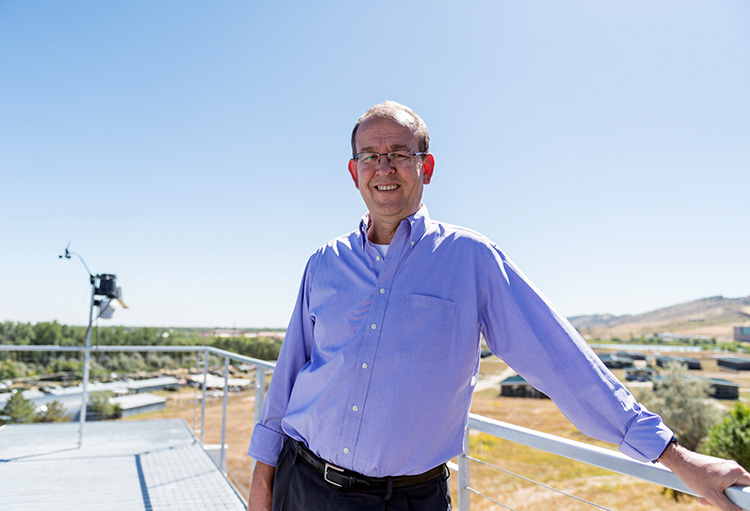
Department of Atmospheric Science Professor James Hurrell has been selected to serve on the Joint Scientific Committee (JSC) of the World Climate Research Programme (WCRP). Hurrell, who is also the Scott Presidential Chair in Environmental Science and Engineering in the Walter Scott, Jr. College of Engineering, will be one of two members on the committee from the U.S.
Read the article on Source, “James Hurrell appointed to serve on World Climate Research Programme Joint Scientific Committee.”
September 18, 2018
Teen Science Café will cover landscape change and disease dynamics in rural Ghana
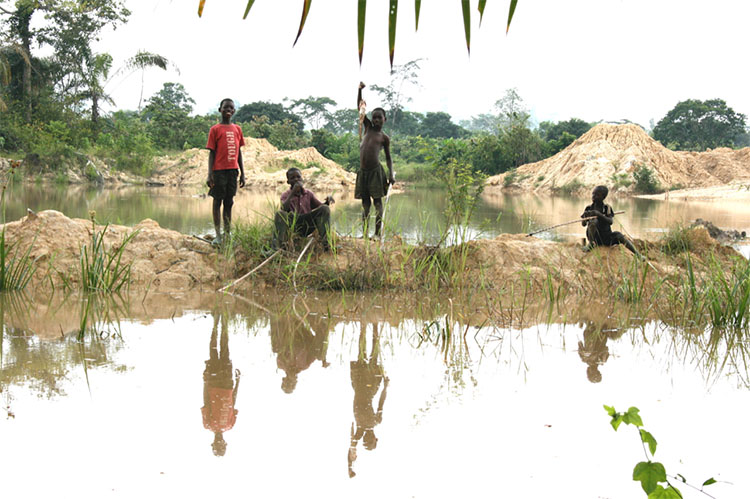
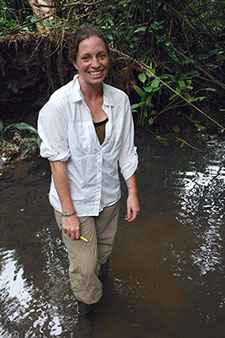
Anthropologist Heidi Hausermann
What does gold have to do with malaria? Heidi Hausermann from CSU’s Department of Anthropology will explore the social, environmental and health implications of gold mining in Ghana, West Africa, at October’s Teen Science Café. While observing high-resolution satellite imagery, students will be asked to speculate on the ecological and social outcomes of landscape change from gold mining. The talk will then reveal how land-use changes are impacting the everyday lives of rural people. Hausermann’s research reveals how local environmental change and health dynamics are shaped by global processes such as gold markets and financial crises.
When: 5-7 p.m., with the presentation starting at 5:30 p.m., Wednesday, Oct. 10
Where: Everyday Joe’s Coffee House, 144 S. Mason St., Fort Collins
Presenter: Heidi Hausermann from CSU’s Department of Anthropology
RSVP to the Oct. 10 Teen Science Café here.
Oct. 10 Teen Science Café flier
The Front Range Teen Science Café is part of a larger national network of science cafés for teens. ESMEI’S Teen Science Café brings scientists and teens together for a conversation about science in a local coffee shop. A primary goal of the café is for teens to increase their understanding of the nature of science and to develop a realistic perception of scientists and the lives they lead, which they sometimes do not get in school.
Photo above: Boys fish in abandoned mining pits in Ghana. Photo credit: Heidi Hausermann
September 11, 2018
Faculty position open in Department of Atmospheric Science
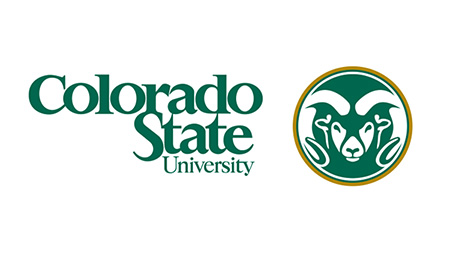
The Department of Atmospheric Science at Colorado State University invites applications for a tenure-track faculty position in the dynamics and physics of the climate system. We solicit candidates with expertise in geophysical fluid dynamics, coupling between clouds and radiation, climate dynamics, and/or planetary atmospheres across a range of spatial and temporal scales. Candidates will be considered at the assistant or associate professor level.
The new faculty member will be expected to build and maintain a strong, internationally recognized research program supported through external funding, complement and expand upon current research and teaching activities, and provide service to the University and broader community. She/he will contribute to teaching and intellectual leadership in our atmospheric science curriculum at the M.S. and Ph.D. levels by teaching courses in the Department’s core graduate curriculum, advising graduate students, and developing advanced courses in his or her areas of expertise.
Please see the full Assistant/Associate Professor job description here.
September 10, 2018
Denver7’s Chief Meteorologist Mike Nelson to speak at FORTCAST event Sept. 25
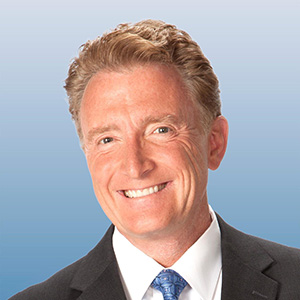
Denver7’s Chief Meteorologist Mike Nelson will discuss “Crayons to Computers: A History of TV Weather” at the first installment of FORTCAST’s What’s Brewing in Weather and Climate series this academic year. With more than 40 years experience as a TV weather forecaster, Nelson has won 18 Emmy awards for Outstanding Weather Anchor and in 2001 was recognized by the Colorado Broadcasters Association as “Citizen of the Year.” He also has written two books: The Colorado Weather Book and Colorado Weather Almanac. Nelson has a meteorology degree from the University of Wisconsin.
Discussion will begin 6:30 p.m. Tuesday, Sept. 25, upstairs at Tap & Handle. Please RSVP here. CSU students, bring your ID for $2 off drafts.
Contact amsfortcast@gmail.com with questions.
September 6, 2018
Melissa Burt named Assistant Dean for Diversity and Inclusion
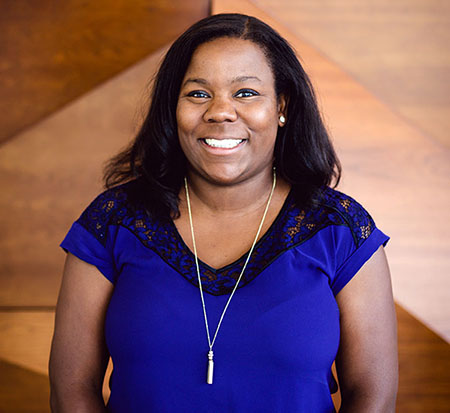
The Walter Scott, Jr. College of Engineering recently welcomed its most diverse incoming class of students to date, with a 34 percent increase in the number of women and 25 percent increase in students of color. While celebrating these gains, the college aims to enhance them further through the appointment of an Assistant Dean for Diversity and Inclusion. Filling this new role is Melissa Burt, who has been developing diversity and inclusion initiatives for a decade as Education and Diversity Manager, first for the Department of Atmospheric Science and more recently for the college.
“[I’m] honored to begin this new role,” Burt said. “It really highlights the commitment of our dean and college to diversity and inclusion.”
In her expanded position, Burt will continue to foster a welcoming and inclusive environment in the college, and focus efforts for recruiting and retaining diverse faculty, staff and students. She will lead strategic planning and implementation of diversity, inclusion and equity goals, and play an active role in university-wide diversity and inclusion initiatives.
Read the article on Source, “Assistant dean appointed to drive diversity and inclusion initiatives.”
September 5, 2018
Kristen Rasmussen to speak at Teen Science Café Sept. 12
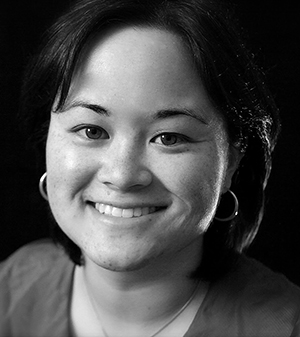
Thunderstorms in Argentina are among the most intense anywhere in the world. Kristen Rasmussen will lead a field campaign in Argentina this fall to study these powerful storms and how they form. She will discuss severe storms and her upcoming field research at September’s Teen Science Café.
When: 5-7 p.m., with the presentation starting at 5:30 p.m., Wednesday, Sept. 12
Where: Everyday Joe’s Coffee House, 144 S. Mason St., Fort Collins
Presenter: Kristen Rasmussen from CSU’s Department of Atmospheric Science
RSVP to the Sept. 12 Teen Science Café here.
Sept. 12 Teen Science Café flier
The Front Range Teen Science Café is part of a larger national network of science cafés for teens. ESMEI’S Teen Science Café brings scientists and teens together for a conversation about science in a local coffee shop, Everyday Joe’s Coffee House. A primary goal of the café is for teens to increase their understanding of the nature of science and to develop a realistic perception of scientists and the lives they lead, which they sometimes do not get in school.
September 4, 2018
Jeff Pierce named Outstanding Professor of the Year
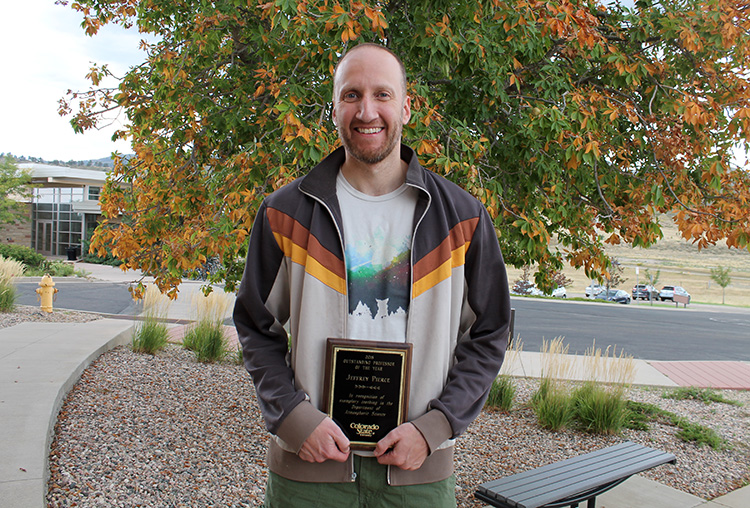
Associate Professor Jeff Pierce was chosen as the 2017-18 Outstanding Professor of the Year by Department of Atmospheric Science graduate student representatives, based on evaluations submitted by students. Students fill out surveys for each course throughout the academic year, and grad reps then determine which professor received the most support and should be honored for teaching excellence.
Graduate Representative Andrea Jenney presented Pierce with a plaque at the New Student Welcome Picnic on Aug. 30.
“Students agree that Jeff clearly teaches with passion and excels at making his content relatable,” she said. “Students also appreciate Jeff’s student-focused teaching style and time spent on in-class discussions. One student wrote, ‘I audited this class and still wanted to show up, that’s how useful and engaging it was!’ ”
Pierce thanked his students for the distinction.
“It means so much to get this positive feedback from the students! We, as faculty, spend a lot of time thinking about how best to keep our classes exciting and how to explain concepts clearly, so it’s great to know when the students think things are working well.”
He added, “I feel extremely lucky to work with such bright and inquisitive students in our department. There is nothing more enjoyable in my job than having the class spontaneously turn into a full-class discussion of science topics.”
August 31, 2018
Department welcomes new students at annual picnic
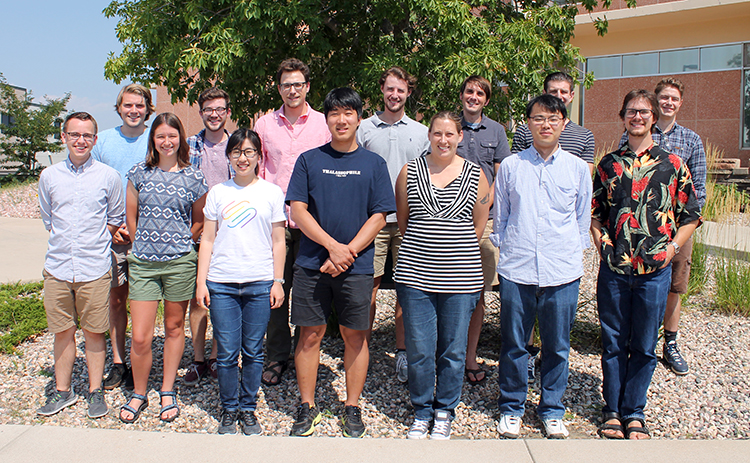
The department welcomed its incoming class of graduate students at a picnic at Spring Canyon Park on Aug. 30. Faculty introduced their new students and shared a little about the research each will be doing. The 2017-18 Outstanding Professor of the Year also was announced at the picnic. Andrea Jenney presented the award to Associate Professor Jeff Pierce.
Photo at top: Fall 2018 incoming class. Front row, left to right:
Drew Koeritzer, Marqi Rocque, Rung Panasawatwong, Simchan Yook, Chandra
Pasillas, Yasutaka Murakami and Michael DeCaria. Back row, left to
right: Alex DesRosiers, Michael Needham, Nicholas Kedzuf, Adam Clayton,
Eric James, Alex Sokolowsky and Matthew Lang. Not pictured: Julieta
Juncosa Calahorrano, Jeremiah Piersante and Greg Zwicke.
August 30, 2018
Jeff Collett to lead team studying effects of oil and gas development on air quality
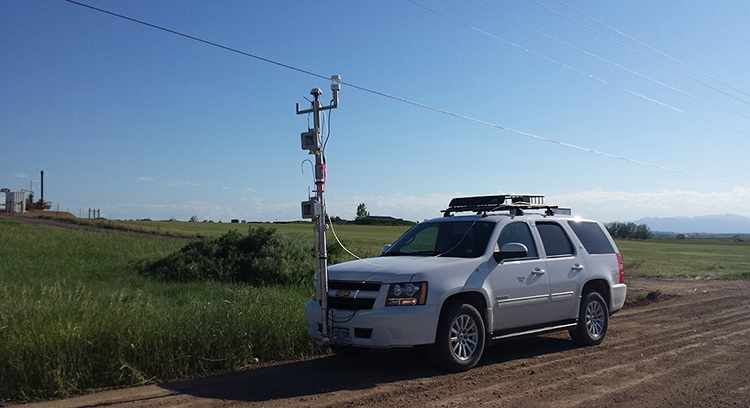
The City and County of Broomfield, like many parts of Colorado, is experiencing an oil and gas boom. With more than 80 new wells slated for drilling in Broomfield, city officials and many average citizens are seeking scientific answers to questions about air quality.
To get those answers, the city has awarded a three-year, $1.7 million contract to Ajax Analytics – a Colorado State University technology spinoff company – and a CSU Department of Atmospheric Science research group to provide new insight into emission sources, emission rates and health exposures related to oil and gas activities. Working together, the team will provide round-the-clock air monitoring and analysis. Their goals are real-time air quality awareness for Broomfield staff and citizens, and a comprehensive, multi-year report that paints a cohesive picture of local air quality.
Read the Source article, “Two teams come together to understand impacts of oil and gas development on air quality.”
Photo above: A mobile plume tracker is one of several instruments to be deployed for studying air quality for Broomfield citizens. Credit: Arsineh Hecobian
August 23, 2018
Alumnus Walt Petersen awarded NASA Exceptional Scientific Achievement Medal
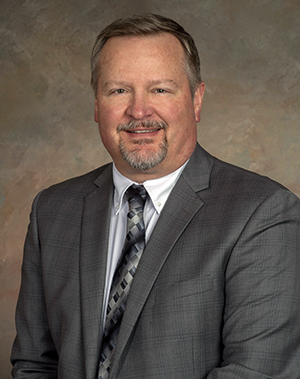
Department of Atmospheric Science alumnus Walt Petersen, a research physical scientist at the NASA Marshall Space Flight Center, has been awarded the NASA Exceptional Scientific Achievement Medal in an Aug. 22 ceremony at the center in Huntsville, Alabama. This prestigious NASA medal is reserved for exceptional scientific contributions toward achievement of the NASA mission. It is given for individual efforts that have resulted in a key scientific discovery or resulted in contribution of fundamental importance in this field or significantly enhanced understanding of the field.
The citation for Petersen’s award reads: “for scientific contributions to the Global Precipitation Measurement mission and leadership of the ground validation program.” Petersen received his M.S. and Ph.D. degrees from the department in 1992 and 1997, respectively.
August 20, 2018
Sonia Kreidenweis receives 2018 Colorado Women of Vision Award
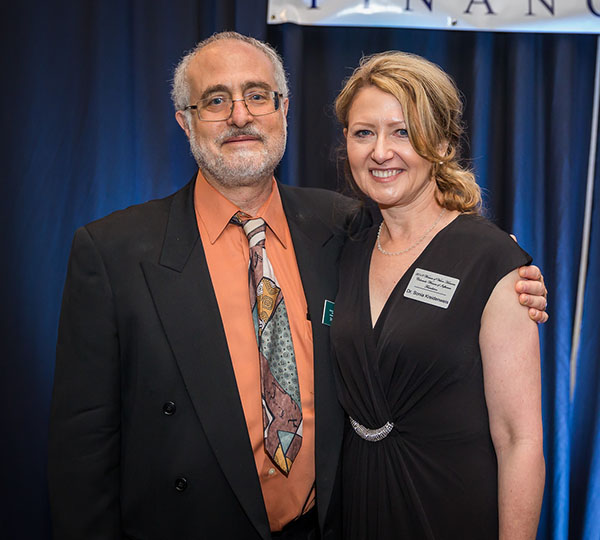
“Sonia Kreidenweis is a woman of extraordinary achievement for her scientific contributions and for training a new generation of scientists necessary for our future,” said Professor of Biomedical Sciences and Engineering Stuart Tobet in his nomination of Kreidenweis for the 2018 Colorado Women of Vision Award.
Kreidenweis, a University Distinguished Professor with the Department of Atmospheric Science, was one of twelve women chosen for the award by the Colorado Women of Influence Foundation. They were honored at the foundation’s annual Women of Vision Gala on July 18 for contributing to the well-being and empowerment of women and the betterment of their communities through outstanding innovation, leadership and social Impact.
“Sonia’s vision, creativity, and can-do attitude have led her down paths of mentoring, service, and responsibility that few faculty go and fewer excel,” Tobet said in his nomination, in which he praised her as a highly accomplished educator, scholar, mentor and innovative leader.
Kreidenweis achieved CSU’s highest academic recognition when she was named a University Distinguished Professor in 2014. She was appointed Associate Dean for Research of the College of Engineering in 2015. While earning department and college accolades at CSU, Kreidenweis also served on the leadership teams of two national organizations. She is a former president of the American Association for Aerosol Research and a past member of the executive committee of the American Meteorological Society.
Tobet pointed out that Kreidenweis has been a strong role model for women in these historically male-dominated national organizations, as well as within the Walter Scott, Jr. College of Engineering.
“Colleges of engineering are not gender diverse, and Sonia is a leader for recruitment and retention of excellent women faculty to break down barriers of gender inequality.”
Kreidenweis’s guidance extends beyond gender lines. Service to young faculty is a major focus for her.
“She not only serves as a role model for junior faculty members, but also actively identifies and implements activities that have the greatest impact on assisting new faculty to develop innovative, compelling, and competitive programs,” Tobet said.
Kreidenweis, who was interviewed along with all of the honorees, discussed her career track and offered some advice for women striking out on their own path.
“If a young woman [asked] me about how to create the life of her dreams, I would suggest that she pursue what she loves, because then work won’t feel like work, work is going to be fun. It helps you get through the hard times. And never forget that you have your family and you have your support network, and people are always there to help you.”
Kreidenweis expressed gratitude for those who supported her along the way and for this most recent honor to add to a long list of accomplishments.
“I’m incredibly honored to have been selected as a Woman of Vision and so grateful to Stu for nominating me. It was a big surprise and a very humbling one, and I’m really grateful to be honored this way.”
Kreidenweis was the first in her family to earn a college degree, and went on to attain her Ph.D. in chemical engineering at a time when not many women were pursuing engineering degrees. She credited her stubbornness for helping her succeed.
“The research that I’ve done I think has been important to the state and to the nation, and it’s a really great feeling to think about your research having some impact like that.”
Her colleagues and students have noted her impact, and she has been commended with the Abell Outstanding Teaching and Service Faculty Award at the college level and a department Professor of the Year Award, voted on by graduate students.
“I’m really proud of being hired at Colorado State and contributing to the Department of Atmospheric Science. It’s been a really wonderful place.”
View Kreidenweis’s Colorado Women of Vision interview here.
Photo at top: Sonia Kreidenweis, recipient of the 2018 Colorado Women of Vision Award, and Stuart Tobet, who nominated Kreidenweis for the award. Photo by Emily Moon of eMoon Photography.
August 10, 2018
CSU Atmospheric Cyclists win Bike to Work Challenge
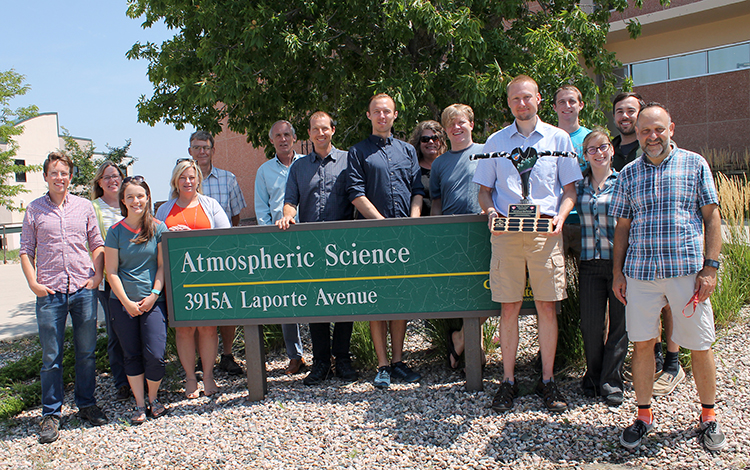
The CSU Atmospheric Cyclists, a team composed of Department of Atmospheric Science and Cooperative Institute for Research in the Atmosphere (CIRA) members, won this year’s Bike to Work Challenge, sponsored by the City of Loveland. The challenge was open to all workplaces along the Front Range and included teams in Colorado Springs.
“The CSU Atmospheric Cyclists led from the start and never let up,” said challenge founder David Droege. “They had terrific participation and just kept the pedals spinning through the entire eight weeks.”
Droege, a systems engineer at Keysight Technologies, founded the informal competition between Colorado companies in 2017 to encourage more people to bike to work. This year’s competition, which ran from April 30 until Bike to Work Day on June 27, involved 197 participants who commuted a total of 35,124 miles, nearly doubling last year’s number of participants and more than doubling last year’s total mileage.
“That distance is equal to 1.4 times around the circumference of Earth,” said Droege.
The team of 41 Atmospheric Cyclists, organized by CIRA researcher Kyle Hilburn, logged 7,367 miles and 809 commute days, which was estimated to have saved 295 gallons of gas. Atmospheric scientist Paul DeMott logged the most miles for the team with 510. Annette Foster rode the longest commute at 24.5 miles round-trip, and Hilburn had the most overall rides on the team, 40.
Read the Source article, “CSU Atmospheric Cyclists win Bike to Work Challenge.”
Photo at top: Team Captain Kyle Hilburn holds the Bike to Work Challenge trophy that was presented to the Atmospheric Cyclists Aug. 8 by challenge founder David Droege (back row, fifth from left) and City of Loveland representatives Katie Guthrie and Shelley Aschenbrenner.
August 6, 2018
Wayne Schubert ‘halo of wisdom’ going strong
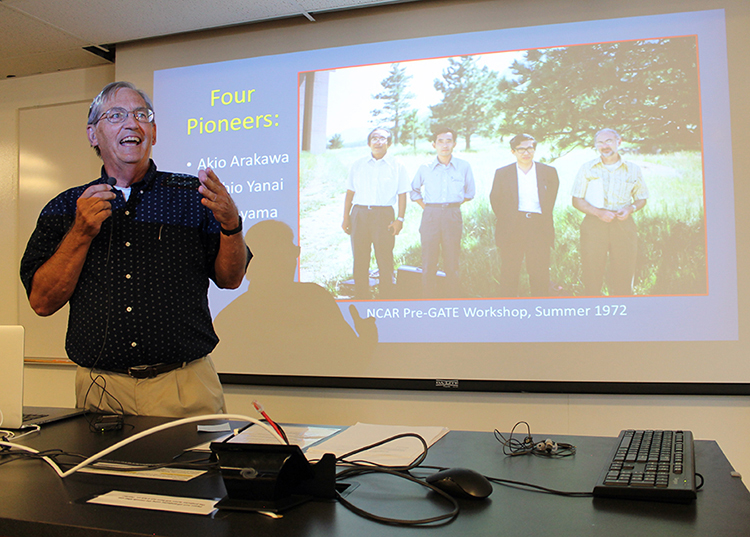
Colleagues, friends, family and former students of Professor Emeritus Wayne Schubert gathered July 27 at the Department of Atmospheric Science to honor the scientist’s “retirement,” or lack of it. After 45 years with the department, Schubert has no intention of leaving research or the department.
“It’s been a great pleasure for me to watch the department grow,” said Schubert as he addressed the audience assembled to pay tribute to him. The department has grown significantly since Schubert joined the faculty in 1973. Since then Schubert has authored 105 publications and advised 32 M.S. and 27 Ph.D. students. Several of them were present to recognize the influence he has had on their lives, with one of his first students, Pedro Silva Dias, traveling from Brazil for the reception.
Pedro praised Schubert’s expert duality in dealing with both the theoretical and practical, and explained how that has impacted his own career. Associate Professor Michael Bell, who has been both Schubert’s student and colleague, described the “Wayne Schubert halo effect,” or the sphere of understanding that Schubert emanates and the knowledge gained in his presence. Senior research associate Rick Taft, who has worked for Schubert since 1991, characterized Schubert as “a jack of all trades and master of everything.”
“Wayne is an amazing man for whom I have the utmost respect and admiration,” Taft said. “He not only has the intellectual gift, discipline and work ethic to be the top-notch, world-class scientist that he is, but he also has an impeccable character that leads him to be humble, gentle, kind, respectful, patient and truly caring of others.”
Schubert has been recognized by the American Meteorological Society for his outstanding contributions to the science and by CSU for his teaching and student advising skills. He has served as the co-chief editor of the Journal of Atmospheric Science and as the publications commissioner for the American Meteorological Society journals.
Though Schubert has retired from teaching, he continues to be a mentor and respected colleague. He recently completed a research proposal to advance his group’s studies in atmospheric dynamics, numerical weather prediction and tropical meteorology.
University Distinguished Professor Dave Randall pointed out that he had known Schubert longer than anyone else in the department. Randall and Schubert both studied under Akio Arakawa at the University of California. Schubert was finishing his Ph.D. when Randall was a new graduate student.
“Arakawa told me to learn from Wayne, and I still am,” Randall said.
Department Head and Professor Jeff Collett said Schubert had set the tone of the department more than anyone else. “I’m thankful you will still be around sharing your halo of wisdom.”
Proving he was indeed the humble and generous person described by his admirers, Schubert shared words of gratitude at the conclusion of the ceremony. He also discussed how much the atmospheric science campus had changed since he started in ’73, when it was a single three-story building, and how the people have made the place what it is.
“It’s not so much the buildings, it’s the people in those buildings. When I look at the buildings, I think about the neurons firing inside.”
July 20, 2018
ATS team wins top prize in North American forecasting competition
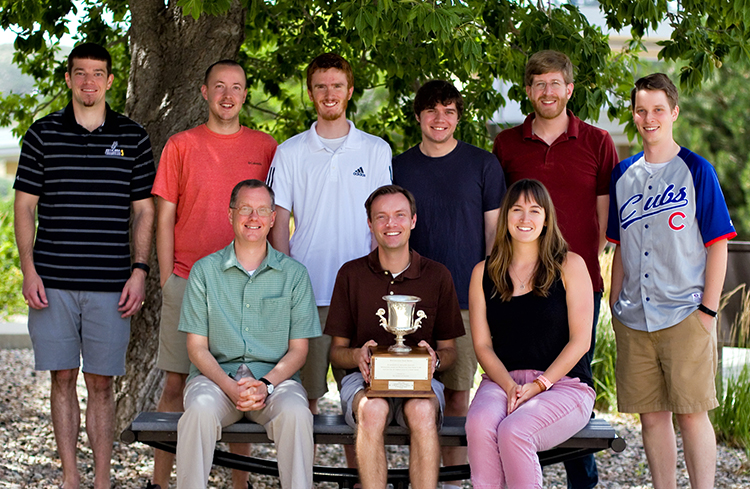
Graduate students, researchers and faculty in CSU’s Department of Atmospheric Science took home the team trophy for the top combined weather forecast score for the 2017-18 season of the WxChallenge, the North American collegiate weather forecasting competition comprised of 1,800 participants from 62 meteorology programs.
During the 20-week contest season, participants apply their knowledge of atmospheric processes and interpretation of numerical weather guidance to predict the daily maximum and minimum temperatures, accumulated precipitation, and maximum sustained wind speeds for designated cities across the U.S. The CSU team managed to out-forecast 40 other teams for the season team trophy, placed first in the two-week 12-team playoff round, had eight members qualify for the individual tournament, and won five individual forecaster trophies.
While this is the first season for CSU to take home the top prize, the team has historically done well in the competition. They placed second overall in 2016-17 with eight individual forecaster trophies. The team is looking forward to the start of the 2018-19 contest season this fall and a chance to defend their title as North America’s top collegiate weather forecasters.
2017-18 individual forecaster trophy winners
- Second place graduate student for the season – Zach Bruick
- First place faculty/staff/postdoc forecaster for Washington, D.C. – Chris Slocum
- First place graduate student forecaster for Cleveland, OH – Zach Bruick
- Runner-up graduate student forecaster for Cleveland, OH – Greg Herman
- Runner-up graduate student forecaster for Binghamton, NY – Zach Bruick
2017-18 CSU team members
- Cory Baggett
- Zach Bruick
- Sam Childs
- Faith Groff
- Greg Herman
- Joe Messina
- Kyle Nardi
- Erik Nielsen
- Russ Schumacher
- Chris Slocum
Photo at top: Front row: Cory Baggett, Russ Schumacher and Faith Groff; back row: Erik Nielsen, Kyle Nardi, Sam Childs, Greg Herman, Chris Slocum and Zach Bruick.
July 19, 2018
Emily Fischer leads WE-CAN campaign to clarify chemistry of wildfire smoke
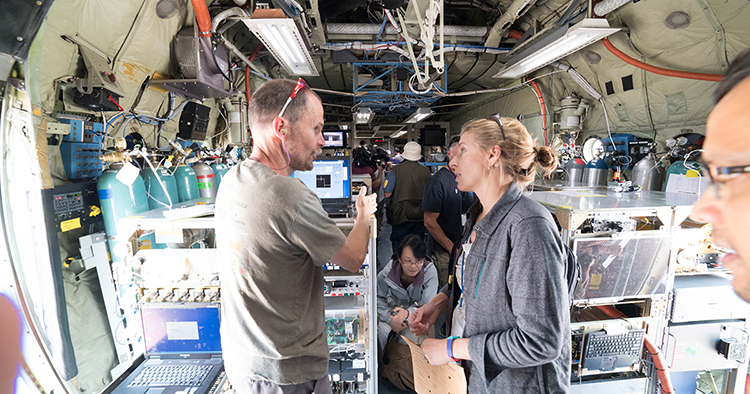
This summer, a four-engine cargo airplane laden with both scientists and sophisticated equipment will fly straight into hazy smoke from Western wildfires.
The flights will comprise the largest, most comprehensive attempt to date to measure and analyze the wildfire smoke that blankets vast swaths of the United States every year.
Throughout late July and August, a multi-agency, multidisciplinary team led by Colorado State University scientists will travel to Boise, Idaho, to conduct 15 to 20 smoke-observation flights. The project is called the Western Wildfire Experiment for Cloud Chemistry, Aerosol Absorption and Nitrogen, or WE-CAN, and is primarily supported by the National Science Foundation.
“This is a challenging field campaign,” said lead scientist Emily Fischer, CSU assistant professor of atmospheric science. “It’s not like measuring the plume from, say, a power plant. We don’t know exactly where the fires will be, but we know that pretty much every year, there is a wildfire burning within a two-hour flight of Boise during the month of August.”
Read the SOURCE article, “Aircraft campaign to clarify chemistry of wildfire smoke.”
Photo at top: WE-CAN scientists Frank Flocke, Emily Fischer and
other collaborators aboard the NSF/NCAR C-130, loaded with
instrumentation for studying wildfire smoke.
July 10, 2018
Erik Nielsen awarded Best Student Poster Presentation at AMS conference
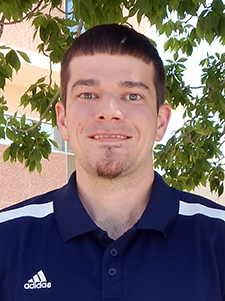
Ph.D. candidate Erik Nielsen, advised by Russ Schumacher, was selected for one of three Best Student Poster Presentation awards at the 29th Conference on Weather Analysis and Forecasting/25th Conference on Numerical Weather Prediction held by the American Meteorological Society June 4-8 in Denver. Nielsen’s winning poster, “Dynamical Insights into Extreme Short-Term Precipitation Associated with Supercells and Mesovortices,” examined how rotation can potentially lead to enhancement of short-term rain rates. A paper on the subject by Nielsen and Schumacher recently was accepted in the Journal of the Atmospheric Sciences.
Nielsen has received two other presentation awards from AMS: a second-place poster award in 2017 for “An Updated U.S. Geographic Distribution of Concurrent, Collocated Tornado and Flash Flood Events and Look at those Observed during the First Year of VORTEX-SE,” and a second-place oral presentation award also in 2017 for “Observations of Extreme Short-Term Precipitation Associated with Supercells and Mesovortices.” (There were no placements given for the recent award, just three overall poster selections.)
July 2, 2018
Amy Sullivan and Christine Chiu take part in historic ARM field campaign
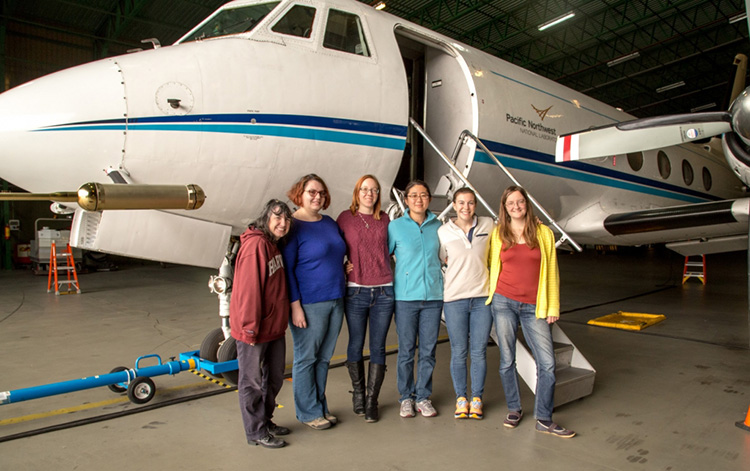
When Jian Wang began to assemble the team behind the Aerosol and Cloud Experiments in the Eastern North Atlantic (ACE-ENA) field campaign, he had only one goal in mind: getting the best.
That team made history within the Atmospheric Radiation Measurement (ARM) user facility. ACE-ENA had one of the largest, if not the largest, groups of women working on an ARM field campaign.
Christine Chiu, an ACE-ENA co-investigator and associate professor in CSU’s Department of Atmospheric Science, says ARM sets a unique example for the opportunities it makes available to women.
“I hope ARM becomes a role model in the community for supporting female scientists,” says Chiu.
The ACE-ENA team, which included co-investigators, forecasters, data analysts, instrument mentors, and ARM Aerial Facility (AAF) staff, traveled to the Azores west of Portugal to study low clouds in a remote marine setting during two intensive operational periods: summer 2017 (June and July) and winter 2018 (January and February). ACE-ENA required ground-based measurements from ARM’s Eastern North Atlantic (ENA) atmospheric observatory on Graciosa Island, in addition to airborne data acquired aboard ARM’s Gulfstream-159 (G-1) research aircraft.
Read the ARM article, “ACE-ENA field campaign and ARM provide opportunities for female scientists.”
Photo above: Female ARM Aerial Facility staff and instrument mentors during ACE-ENA gather in front of ARM’s Gulfstream-159 (G-1) research aircraft during the winter 2018 intensive operational period. From left to right, they are: Amy Sullivan, Colorado State University; Maria Zawadowicz, Alyssa Matthews, Fan Mei, and Lexie Goldberger, Pacific Northwest National Laboratory; and Susanne Glienke, Michigan Technological University. Not pictured are Tamara Pinterich of Brookhaven National Laboratory and Kaitlyn Suski of Pacific Northwest National Laboratory.
June 27, 2018
Women’s mentoring network co-led by department members receives national award
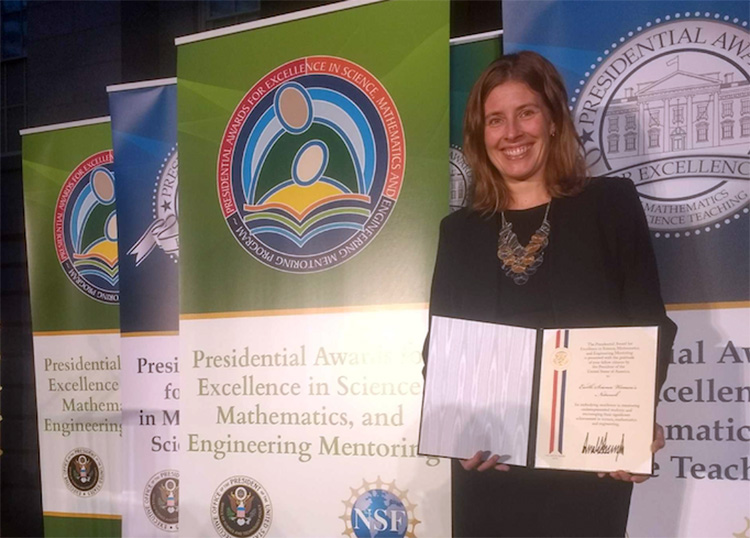
The Earth Science Women’s Network, an international peer-mentoring organization for women in the geosciences, has received a national honor for its work in creating a supportive community for thousands of scientists. Two members of the network’s leadership board are at Colorado State University; scientists from University of Colorado Boulder, UNAVCO and Colorado College also lead the organization.
Emily Fischer, CSU assistant professor of atmospheric science and a five-year board member of the Earth Science Women’s Network, accepted the Presidential Award for Excellence in Science, Mathematics and Engineering Mentoring on behalf of the organization. Melissa Burt, CSU research scientist in atmospheric science, serves as the network’s vice president. Burt is also the education and diversity manager for the Walter Scott, Jr. College of Engineering.
“The Earth Science Women’s Network has empowered and supported thousands of women across the nation, and internationally,” Burt said. “From my own experience, [the network] has provided me with an exceptional community of talented and brilliant scientists … It has also influenced many of us to take a leap and be a leader. We are using these leadership positions to promote and mentor scientists of today and welcome the scientists of tomorrow.”
Read the SOURCE article, “Women’s mentoring network with strong CSU ties receives national award.”
Photo at top: Emily Fischer accepts the Presidential Award for Excellence in Science, Mathematics and Engineering Mentoring on behalf of the Earth Science Women’s Network.
June 22, 2018
Faculty, alumni and friends of department invited to submit alum nominations
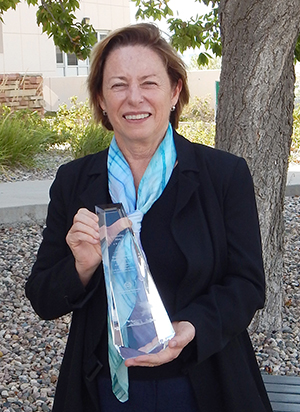
Faculty, alumni and friends of the department are invited to submit nominations for the 2018 Colorado State University Atmospheric Science Distinguished Alum Award. The award honors former students whose accomplishments in their careers and service to the profession, the public and/or industry have brought recognition to that individual, to the department, and to Colorado State University. The award recipient(s) will be honored in a department ceremony in late summer or early fall.
Nominations of outstanding alums at mid-career stage or beyond are encouraged. Nominations will be reviewed by the Department Awards Committee.
To nominate an individual, please complete the online nomination form at atmos.colostate.edu/alumni/award-nomination.php and attach a current vitae or resume. Letters of support are not requested and will not be considered in the review process. If you wish to renew a past nomination, please resubmit the nomination using the online form. Nomination deadline is July 31.
A list of past recipients can be found on our Alumni page.
Please direct questions to Sarah Tisdale at Sarah.Tisdale@colostate.edu.
Pictured above: 2017 Distinguished Alum Maria Silva Dias
June 20, 2018
DOE to fund two projects by Department of Atmospheric Science researchers
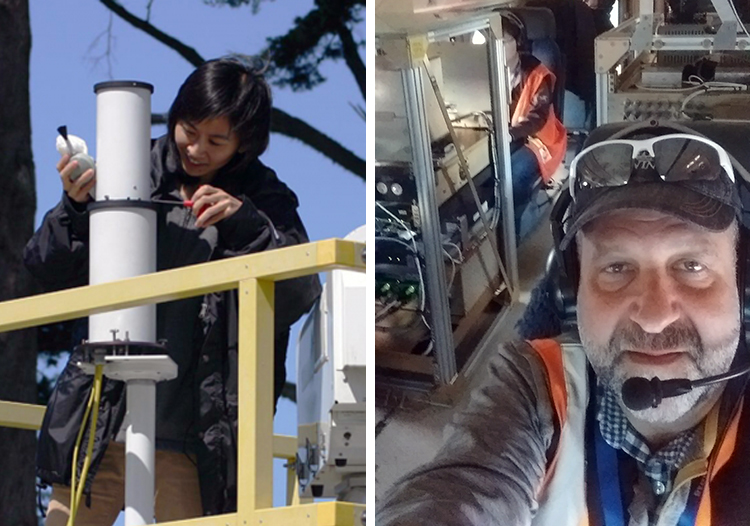
Two of the 27 projects the U.S. Department of Energy has chosen to fund in atmospheric and ecological sciences will be conducted by Department of Atmospheric Science researchers. Associate Professor Christine Chiu and Senior Research Scientist Paul DeMott have been awarded DOE grants for separate projects.
The DOE announced Tuesday it will invest $15 million in the 27 projects in an effort to improve the power of Earth system models to predict weather and climate.
Chiu’s project, “Assessing Secondary Ice Production in Continental Clouds Based on AMF Synergistic Remote Sensing Observations,” will use polarimetric radar observations of mixed-phase clouds to characterize secondary ice production.
DeMott’s project, “Ice Nucleating Particles, Aerosols and Clouds over the Higher Latitude Southern Ocean,” will analyze filter samples from campaigns in the Southern Ocean region to investigate the role of sea spray formation and microbial activity in primary ice nucleation processes.
DeMott looks forward to the analysis made possible by the award.
“I was excited to receive this award, because we have a great data set in hand from DOE ARM funding, and this grant now assures that we will mine it to its full potential,” he said.
All funded projects were selected by competitive peer review.
“Improving Earth system modeling and prediction capabilities is a critical step in mitigating future risks to the Nation’s energy supplies,” said U.S. Secretary of Energy Rick Perry in the DOE announcement. “By helping us to better understand our environment, these investments in science will help us maintain a strong energy infrastructure and reliable energy supplies while also ensuring that America remains at the forefront of energy sciences and technology.”
Photo at top: Christine Chiu and Paul DeMott pictured during field campaigns.
June 13, 2018
FORTCAST to host second Weatherfest July 1
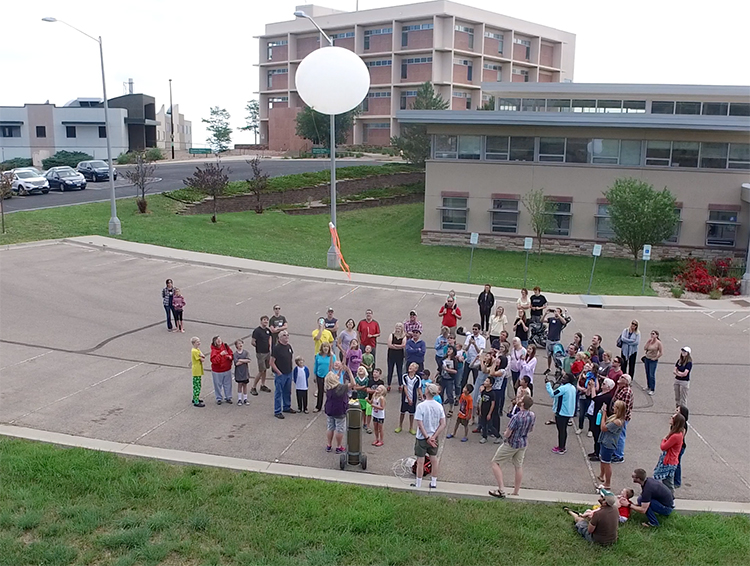
FORTCAST’s second annual Colorado Weatherfest will be held 11 a.m. to 3 p.m. Sunday, July 1. All ages are invited to attend the event at the Scott Bioengineering Building on CSU’s main campus.
Featuring a weather balloon launch and drone demonstration, Weatherfest introduces weather and climate principles through hands-on activities. Dozens of scientists from across Colorado will participate, including representatives from:
- CSU Department of Atmospheric Science
- Cooperative Institute for Research in the Atmosphere (CIRA)
- Colorado Climate Center
- City of Fort Collins
- Open Snow
- Fort Collins Museum of Discovery
- Little Shop of Physics
- National Weather Service
- WeatherNation
- Center for Severe Weather Research
- Earth System Modeling and Education Institute (ESMEI)
- University of Colorado Department of Atmospheric and Oceanic Sciences
Visit the Facebook Weatherfest event page.
Photo above: A weather balloon was launched at the inaugural Colorado Weatherfest in 2017.
June 11, 2018
REU interns get firsthand atmospheric research experience
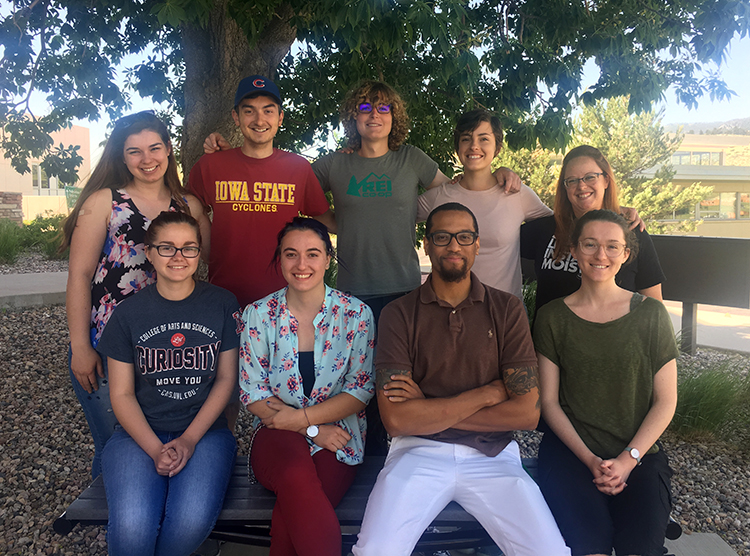
The Earth System Modeling and Education Institute (ESMEI), the institutional legacy of CMMAP, welcomed its summer interns last week. ESMEI offers paid summer undergraduate research internships in the Department of Atmospheric Science, where interns join world-class atmospheric scientists investigating the science of clouds, climate and climate change, weather, and modeling.
The Research Experiences for Undergraduates (REU) program also gives interns the opportunity to attend scientific seminars, visit national scientific laboratories, and participate in professional development training. The program spans 10 weeks from late May through early August.
Front row, left to right: Emily Fletcher, Savanna Wolvin, Marquin Spann and Shannon Bohman. Back row, left to right: Ruby Nelson, Caleb Wood, Emily Wein, Samantha Gillette and Christiaan Patterson.
June 8, 2018
Science magazine features Emily Fischer’s upcoming field campaign
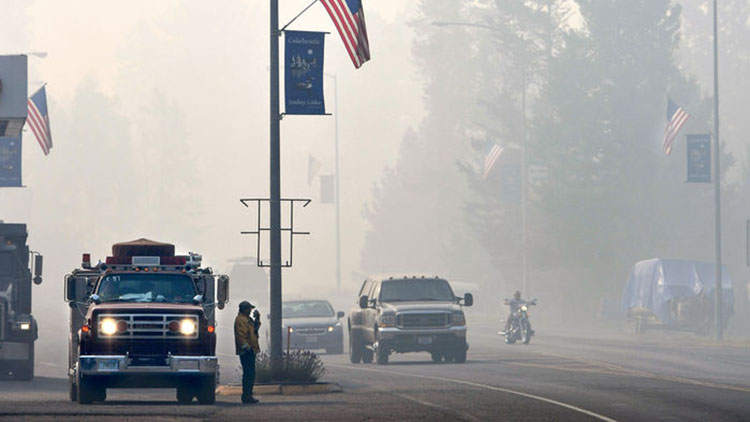
Emily Fischer is likely one of the few people whose summer plans were buoyed by a recent forecast that much of the western United States faces another worse-than-normal wildfire season. Unusually warm weather and drought, together with plenty of dry grass and brush, are expected to create prime conditions for blazes this summer, federal officials announced on 10 May.
The forecast has local officials bracing for the worst. But it represents an opportunity for Fischer, an atmospheric scientist at Colorado State University in Fort Collins who is preparing to spend the summer flying through plumes of wildfire smoke aboard a C-130 cargo plane jammed full of scientific equipment. The flights are the highlight of an unprecedented effort, costing more than $30 million, that involves aircraft, satellites, instrumented vans, and even researchers traveling on foot. Over the next 2 years, two coordinated campaigns—one funded by the National Science Foundation (NSF), and the other by NASA and the National Oceanic and Atmospheric Administration (NOAA)—aim to better understand the chemistry and physics of wildfire smoke, as well as how it affects climate, air pollution, and human health.
Read the Science article, “Scientists race to reveal how surging wildfire smoke is affecting climate and health.”
Photo at top: Smoke from a nearby wildfire blanketed Seeley Lake, Montana, for weeks in the summer of 2017. Photo by Kurt Wilson of the Missoulian
June 1, 2018
CSU team updates hurricane forecast, now predicts near-average season

Colorado State University hurricane researchers have decreased their forecast from their early April prediction and now call for a near-average Atlantic hurricane season. The primary reason for this decrease is anomalous cooling in the tropical Atlantic.
The weak La Niña that occurred this past winter has dissipated, and there is the potential that a weak El Niño could develop by the peak of the Atlantic hurricane season (August-October). However, the forecast team believes that neutral ENSO (El Niño-Southern Oscillation) conditions are the most likely scenario for this year’s season. El Niño tends to increase upper-level westerly winds across the Caribbean into the tropical Atlantic, tearing apart hurricanes as they try to form.
Read the SOURCE article, “CSU team decreases forecast, now calls for near-average 2018 Atlantic hurricane season.”
May 30, 2018
Michael Bell discusses hurricane season on NPR Science Friday
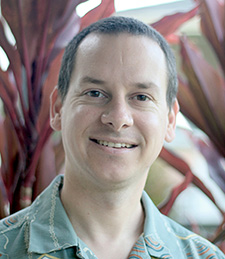
Associate Professor Michael Bell talked about the 2018 Atlantic hurricane season, the challenges of long-term weather prediction, and the interplay between climate and weather on NPR’s Science Friday on June 1.
Read about or listen to the NPR episode here.
May 29, 2018
ATS hosts North Carolina A&T State University undergrads
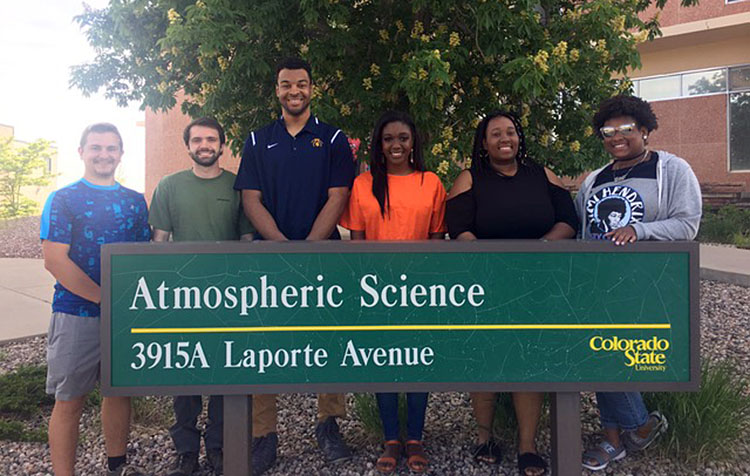
Six undergraduate students from North Carolina A&T State University visited the department May 20-25, as part of the department’s NSF-GEOPATHS program and a collaboration with Prof. Solomon Bililign from the North Carolina school. Prof. Scott Denning and Melissa Burt are the CSU co-PIs for the NSF-GEOPATHS program. The goals of their visit were to:
- Actively engage with CSU faculty and students who work in complementary research areas;
- Expose NCA&T students to the larger atmospheric science community;
- Prepare NCA&T students for an REU experience outside of their home institution;
- Inform NCA&T students about graduate school opportunities at Colorado State University.
A fully immersive experience in atmospheric science was planned for the students, including tours of the department, opportunities to learn about ATS research, professional development workshops, and three field trips to research facilities – the National Center for Atmospheric Research, CSU Powerhouse and the National Atmospheric Deposition Network (NADP) field site in Rocky Mountain National Park.
Photo at top: From left to right, North Carolina A&T State University students Jackson Wiles, Ian York, Charles Carrington, Mariah Bush, Ashley Pope and Makala Murphy visited the department May 20-25.
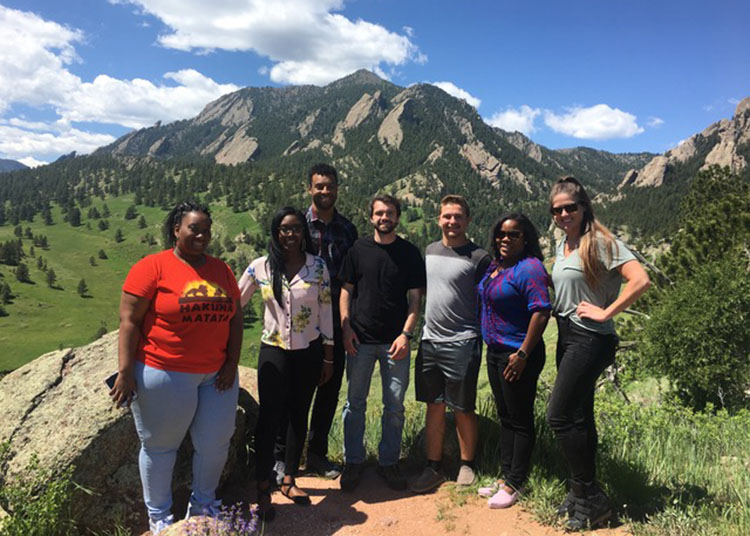
Visiting North Carolina A&T State University students, Melissa Burt and Torrie Moss pose in front of Bear Mountain at NCAR Mesa Lab in Boulder.
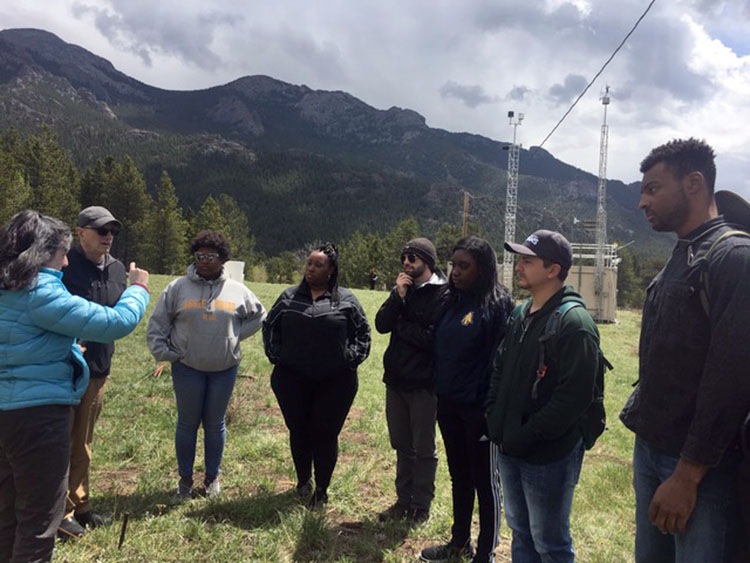
Research Scientist Amy Sullivan talks about the measurements taken at the NADP field site in Estes Park.
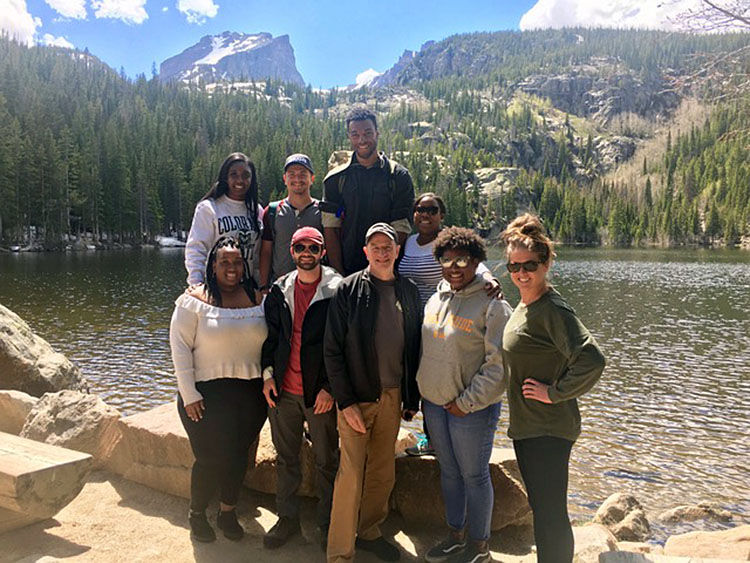
North Carolina A&T State University students, Melissa Burt and Torrie Moss pose in front of Bear Lake in Rocky Mountain National Park.
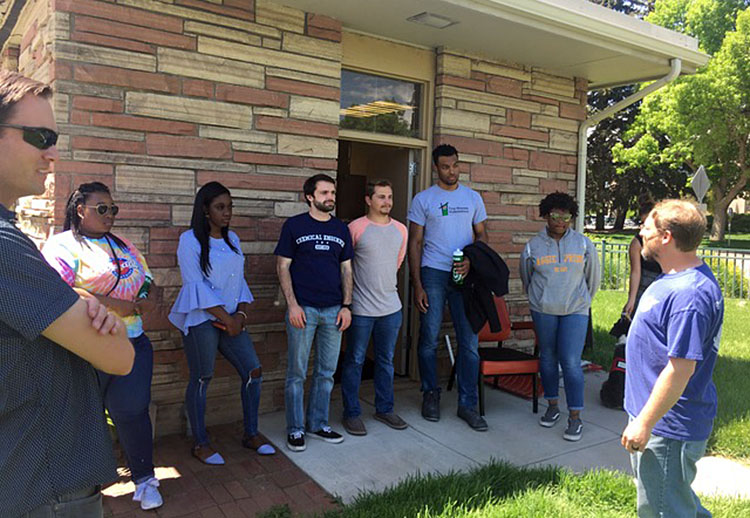
Noah Newman and Colorado Sate Climatologist Russ Schumacher talk with the visiting students about the history of the CSU weather station.
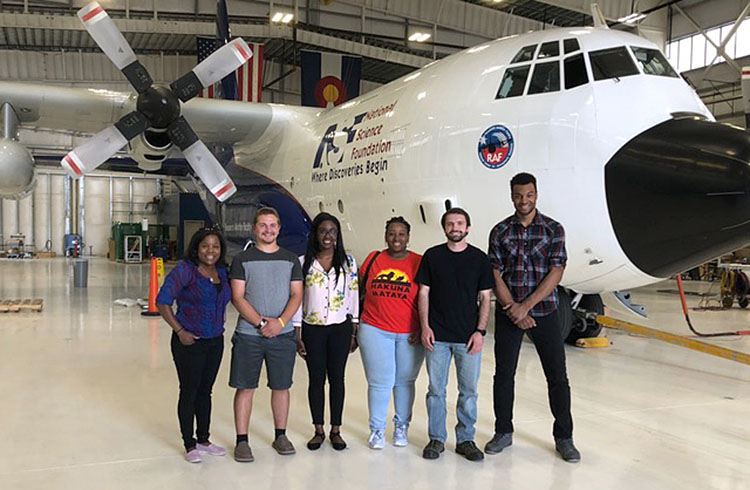
Melissa Burt, left, and visiting students from North Carolina A&T State University pose in front of NCAR’s C-130.
May 28, 2018
Atmospheric science students apply course material to mountain environment
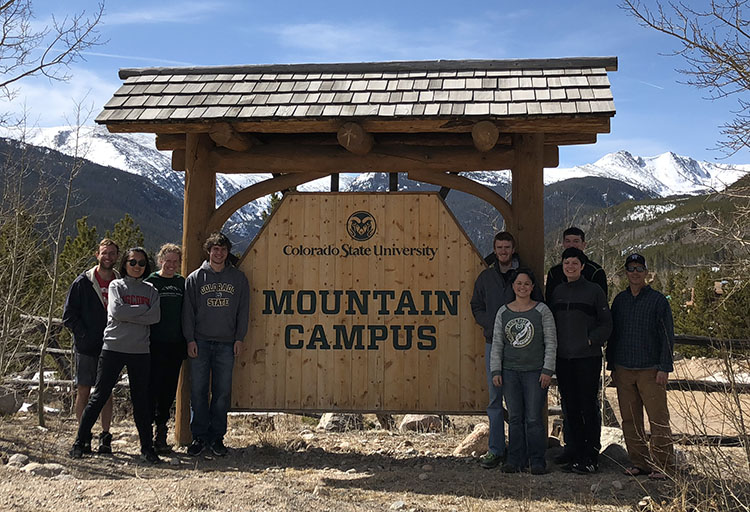
Living in Colorado, the Rocky Mountains and foothills greatly influence our daily lives, regardless of whether we ski or snowboard. The mountains affect the weather we experience every day.
“Mountain weather, downslope windstorms, mountain wave turbulence, beautiful mountain wave clouds, thunderstorms, and mountain-enhanced rain and snowfall are all important aspects of life in Colorado that we experience on a daily basis,” said Department of Atmospheric Science Assistant Professor Kristen Rasmussen, who teaches an experimental course on the influence of mountains on weather and climate.
Colorado State University’s Mountain Campus made it possible for Rasmussen to take her class into the field for hands-on learning and practical application of the course material.
Read the SOURCE article, “High-altitude learning: Mountain Campus a prime location for climate research and education.”
Photo at top: Kristen Rasmussen and her mountain meteorology class at CSU’s Mountain Campus.
May 25, 2018
Will Lassman selected for STEM Chateaubriand Fellowship
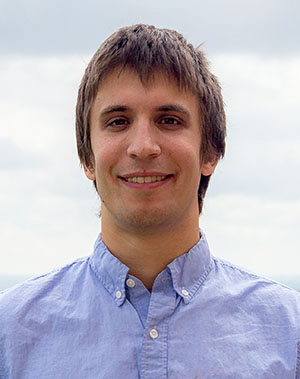
Ph.D. candidate Will Lassman, co-advised by Jeff Pierce and Jeff Collett, has been chosen for a STEM Chateaubriand Fellowship. The fellowship is a grant offered by the Embassy of France in the United States to outstanding Ph.D. students from U.S. universities who wish to conduct research in France. Chateaubriand fellows are selected through a merit-based competition, through a collaborative process involving evaluators in both countries.
The fellowship will fund Lassman’s nine-month stay at the Institut national de la recherche agronomique (INRA) in Paris, where he will learn how to use some of the state-of-the-art modeling tools the lab has developed.
“The lab I will be visiting in France has some of the world’s leading experts at measuring and modeling atmospheric ammonia interactions with the Earth’s surface,” Lassman said.
Lassman will apply the lab’s tools to his work with ammonia processes on the Colorado Front Range, and the results will contribute to his dissertation.
Lassman’s upcoming visit and work in France were made possible by French President Emmanuel Macron’s Make our Planet Great Again Initiative, which increased the funding available for projects related to Earth science, climate and sustainability. Lassman’s research on pollution and agriculture sustainability fit the initiative’s goals. He will receive a monthly stipend for nine months, support for his travel to France and health insurance coverage abroad.
Lassman is excited about the opportunity and expects to gain more than data from the trip.
“I want to work internationally after I finish my Ph.D., and this seems like a good way to network with many scientists who do research that is related to what I do.”
May 16, 2018
Climate scientist James Hurrell named first Scott Presidential Chair
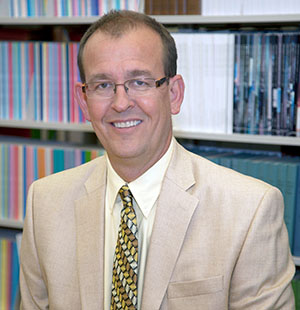
James Hurrell will join Colorado State University in September 2018 as the Scott Presidential Chair in Environmental Science and Engineering. Hurrell will fill the first of four presidential chairs in the Walter Scott, Jr. College of Engineering, endowed by a generous gift from college alumnus Walter Scott, Jr. The four chairs represent the college’s areas of excellence in water, health, energy and the environment.
Hurrell serves as director of the National Center for Atmospheric Research (NCAR) in Boulder, where he is also a senior scientist in the Climate and Global Dynamics Laboratory. He received his Ph.D. in atmospheric science from Purdue University. Hurrell will be appointed at the rank of professor in the Department of Atmospheric Science.
Read the SOURCE article, “Climate scientist James Hurrell named first Walter Scott, Jr. Presidential Chair.”
May 15, 2018
Katelyn O’Dell, Casey Patrizio and Naufal Razin awarded NASA fellowships
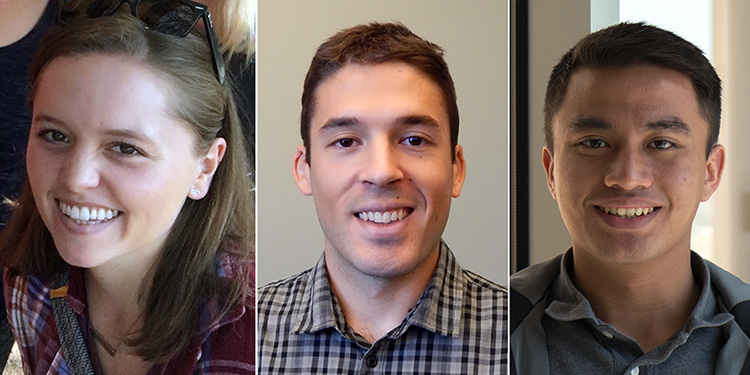
Graduate students Katelyn O’Dell, Casey Patrizio and Naufal Razin have been selected to receive NASA Earth and Space Science Fellowships. The NESSF ensures continued training of a highly qualified workforce in disciplines required to achieve NASA’s scientific goals. Awards resulting from the competitive selection are made in the form of training grants to the respective educational institutions, with the faculty advisor serving as the principal investigator.
NASA received 424 applications in Earth Science Research and selected 54 for award. Selection was based on scientific merit of the proposed research, relevance of the proposed research to NASA’s objectives, and the applicant’s academic excellence. Three from the Department of Atmospheric Science were chosen for the following proposals:
- Katelyn O’Dell, advised by Jeff Pierce
“A Tale of Two Regions: Assessing and Contrasting Smoke-Exposure Estimates in the Southeastern and Western U.S.” - Casey Patrizio, advised by Dave Thompson
“The Role of Clouds in Northern Hemisphere Extratropical-Tropical Interactions” - Naufal Razin, advised by Michael Bell
“The Influence of Tropical Cyclone Rainband Convection on Intensity”
May 11, 2018
Congratulations to our Spring and Summer 2018 graduates!
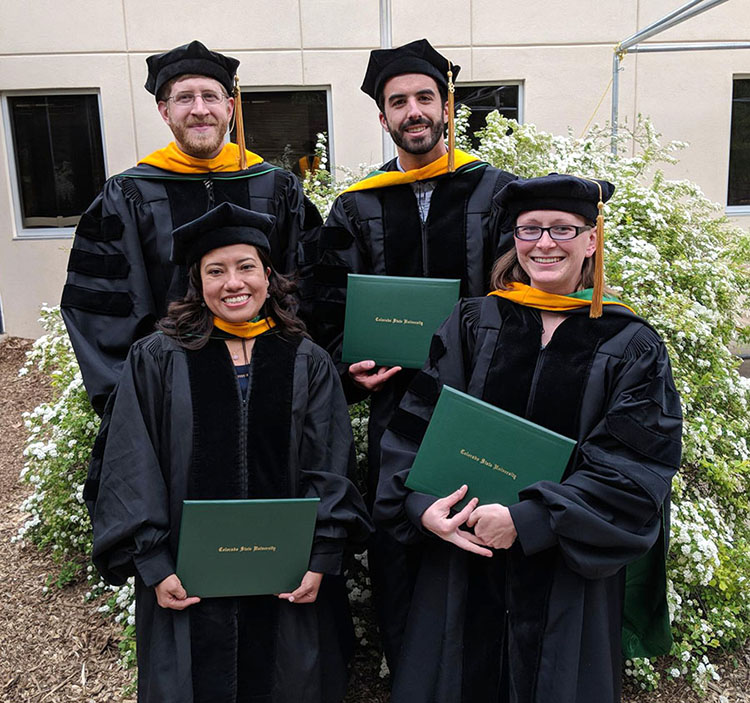
Spring 2018 Graduates
| Julie Barnum | M.S. | Advisor: Steven Rutledge |
| Trent Davis | M.S. | Advisor: Steven Rutledge |
| Leah Grant | Ph.D. | Advisor: Sue van den Heever |
| Nathan Kelly | M.S. | Advisor: Russ Schumacher |
| Jakob Lindaas | M.S. | Advisor: Emily Fischer |
| Naufal Razin | M.S. | Advisor: Michael Bell |
| Rick Schulte | M.S. | Advisor: Chris Kummerow |
| Yixing Shao | M.S. | Advisor: Jeff Collett |
| Kira Shonkwiler | Ph.D. | Advisors: Jeff Collett and Jay Ham |
| Chris Slocum | Ph.D. | Advisor: Wayne Schubert |
| Derek Weber | M.S. | Advisor: Jeff Collett |
| Justin Whitaker | M.S. | Advisor: Eric Maloney |
Summer 2018 Graduates
| Jack Kodros | Ph.D. | Advisor: Jeff Pierce |
| Ben Trabing | M.S. | Advisor: Michael Bell |
| Zitely Tzompa | Ph.D. | Advisor: Emily Fischer |
Photo: Spring and Summer 2018 Ph.D. graduates who walked in commencement ceremonies Friday, May 11. From left to right, front to back, Zitely Tzompa, Kira Shonkwiler, Chris Slocum and Jack Kodros.
May 10, 2018
Graeme Stephens elected as Royal Society Fellow
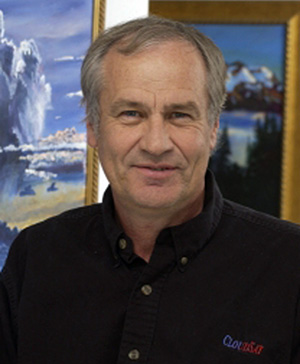
University Distinguished Professor Emeritus Graeme Stephens has been elected as a fellow of the Royal Society for his exceptional contributions to science.
“This is a very prestigious honor, reserved only for those at the very top of their fields,” said Department Head Jeff Collett, who congratulated Stephens.
Stephens directly linked the recognition to his experience at CSU.
“It of course reflects my time at CSU where I had the chance to dig deep and really learn about the science,” he said.
Founded in 1660, the Royal Society is the oldest scientific academy in continuous existence. It is a fellowship of many of the world’s most eminent scientists. Fifty Royal Society Fellows were named this year. Elon Musk joins Stephens in the new class.
Since his retirement from CSU, Stephens has served as Director of the Center for Climate Sciences at the Jet Propulsion Laboratory in Pasadena, California. He has maintained his involvement with the Department of Atmospheric Science as a senior research scientist and by advising postdocs and engaging with department students. He is a member of the U.S. National Academies and recently received the 2017 Mason Gold Medal from the Royal Meteorological Society.
May 8, 2018
Erin Dougherty named SoGES Sustainability Leadership Fellow
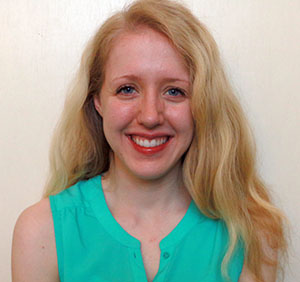
CSU’s School of Global Environmental Sustainability (SoGES) has selected Ph.D. student Erin Dougherty as one of 20 early career academics to be a Sustainability Leadership Fellow for the 2018-19 academic year. Dougherty is advised by Assistant Professor Kristen Rasmussen.
“The SoGES Sustainability Leadership Fellows program immediately appealed to me because it seemed like a unique opportunity to work across disciplines at CSU and gain skills in science communication as well as public and political engagement. These skills are ones that are not explicitly taught in a Ph.D., but skills I consider to be extremely valuable since I desire to make my research applicable and meaningful beyond academia,” Dougherty said.
SoGES recognizes that CSU’s future Ph.D.s and postdoctoral researchers are a primary informational resource for the complex decisions that will determine our environmental future. Over the course of one year, the fellows receive training to become leaders for the future, learning to effectively communicate science to the media, policymakers and public. They also will receive training in professional development skills and techniques, and learn new strategies to build successful careers that incorporate meaningful engagement and an interdisciplinary approach to research.
“To get the opportunity to work with individuals from diverse backgrounds – students in political science, biology and natural resources – on the central topic of sustainability I anticipate will be a tremendous learning and eye-opening experience. It will be exciting to see what I learn from others and how I can apply it to my own work, as well as foster interdisciplinary collaborations,” Dougherty said.
Dougherty expressed how she will apply the fellowship to her career goals.
“My Ph.D. research is investigating how floods might change in a future, warmer climate. In addition to understanding the atmospheric processes that govern these changes, a huge motivation for conducting this research is to apply and communicate this research to a variety of sectors to help inform decision-making. This fellowship would give me the tools to effectively meet this goal, so that if I talk to policy-makers, media or the public, I can help them understand why we should care about floods in a future climate and how to translate knowledge into action.”
The Sustainability Leadership Fellows represent 15 departments and six colleges.
“I am excited to welcome our eighth cohort of Sustainability Leadership Fellows into the program, as we continue to equip CSU’s early career scientists to tackle our world’s biggest challenges,” said SoGES Director Diana Wall. “This program has become increasingly competitive, and I am thrilled at the high caliber of graduate students and postdocs at CSU who are motivated to be agents of change for a sustainable future.”
Read the SOURCE article, “Sustainability Leadership Fellows named for 2018-19.”
May 4, 2018
Sam Childs and Jack Kodros receive department honors for student research
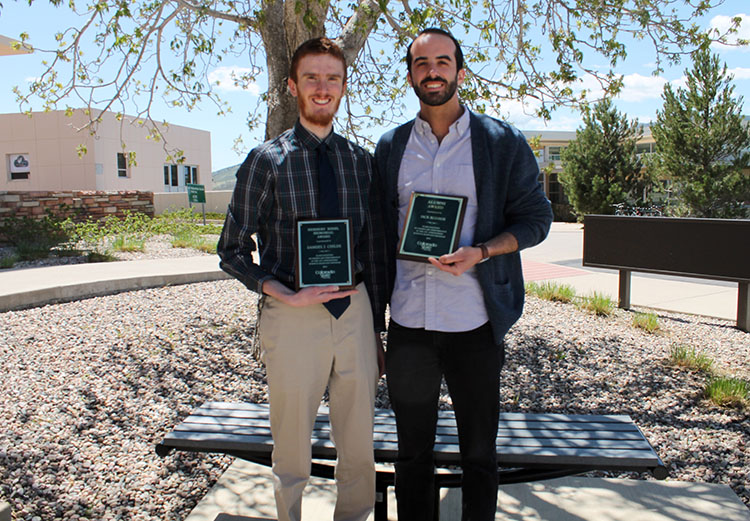
Sam Childs and Jack Kodros were honored this afternoon for outstanding student publications. Childs, advised by Associate Professor Russ Schumacher, received the Riehl Memorial Award for an outstanding paper based on M.S. thesis research. Childs was nominated for two papers and was selected for “Cold-season Tornadoes: Climatological and Meteorological Insights.” Kodros, advised by Associate Professor Jeff Pierce, received the Alumni Award for an outstanding paper based on Ph.D. research. He was chosen for his paper “Quantifying the Contribution to Uncertainty in Mortality Attributed to Household, Ambient, and Joint Exposure to PM2.5 from Residential Solid-Fuel Use.”
Herbert Riehl, Jr. was in attendance for presentation of the Herbert Riehl Memorial Award that honors his father and founder of the Department of Atmospheric Science. Childs and Kodros each gave brief technical presentations on their research following announcement of their awards.
Kodros is one of a handful of students who have received both the Riehl and Alumni awards. When Kodros was recognized with the Riehl Award in 2016, however, he was not able to accept it in person because he was delayed in India on visa complications following a research trip there.
Photo: Sam Childs (left) and Jack Kodros with their Riehl and Alumni awards, respectively.
May 4, 2018
Tatooine is too hot, Hoth is too cold, but Earth is just right
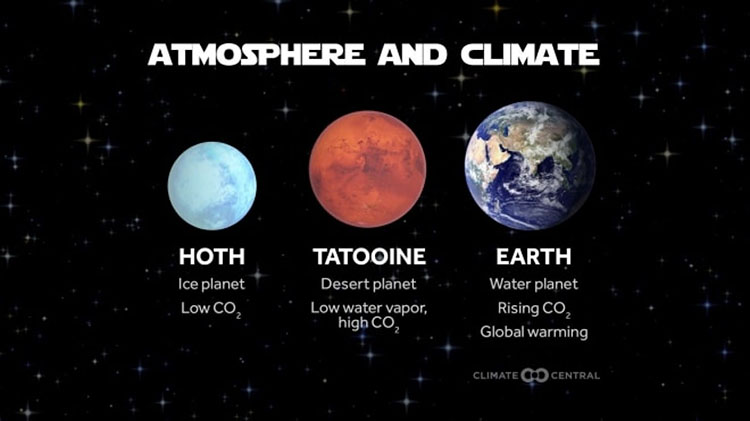
In honor of Star Wars Day, Professor Scott Denning wrote this insightful and humorous planetary climate analysis for The Washington Post: “May the 4th be with Earth, a perfect planet that’s not too Hoth or Tatooine.”
May 3, 2018
Emily Fischer receives Graduate Advising and Mentoring Award
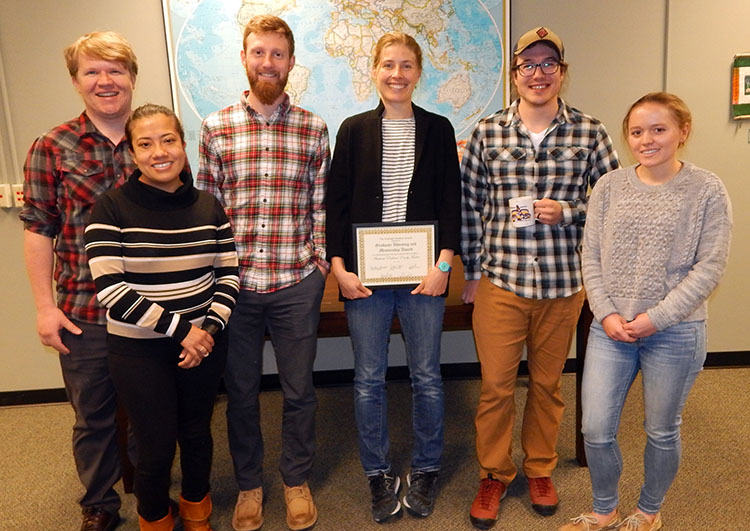
Assistant Professor Emily Fischer has been selected as one of three recipients of this year’s Graduate Advising and Mentorship Award from the CSU Graduate Student Council. Winners are selected based on nominations by CSU graduate students across all disciplines. In its fourth year, the award was created to acknowledge outstanding advisors, who exceptionally dedicate their time, energy and wisdom to graduate students. Thirty-one advisors were nominated, including Assistant Professor Kristen Rasmussen.
“This is such a special award to win given the fact that one’s students have to put together a nomination package,” said Associate Department Head Sue van den Heever, who called Fischer a highly deserving candidate.
Fischer’s students said nominating her was a “no-brainer.”
“Emily’s enthusiasm, support and guidance has been unwavering and critical to each of us in our development as young scientists. Emily makes time to meet with each of us at least once a week, where we discuss research progress, ideas for new research, and to make sure that each of us are on track to graduate and meet career goals,” five of Fischer’s students wrote in their nomination letter.
They credit Fischer’s encouragement and support for inspiring them to apply for fellowships, grants and awards they have received.
Fischer called receiving the honor “a wonderful surprise.”
“My students may not realize just how easy they are to mentor – they are such a talented and motivated group of scientists. I’m incredibly proud of the work they do,” she said.
Van den Heever, who was the last Department of Atmospheric Science faculty member to receive the award in 2015, noted the department’s success in this area. Assistant Professor Elizabeth Barnes received an honorable mention for the award last year.
“I love it when ATS demonstrates that not only are we successful in research, but we are passionate about our teaching too,” van den Heever said.
You can find the complete list of winners, honorable mentions and nominees here.
Photo: Emily Fischer (center) and her students who nominated her for the Graduate Advising and Mentoring Award, (from left) Jared Brewer, Zitely Tzompa, Jakob Lindaas, Steven Brey and Kate O’Dell.
May 2, 2018
Professional development workshop on careers in academia May 10
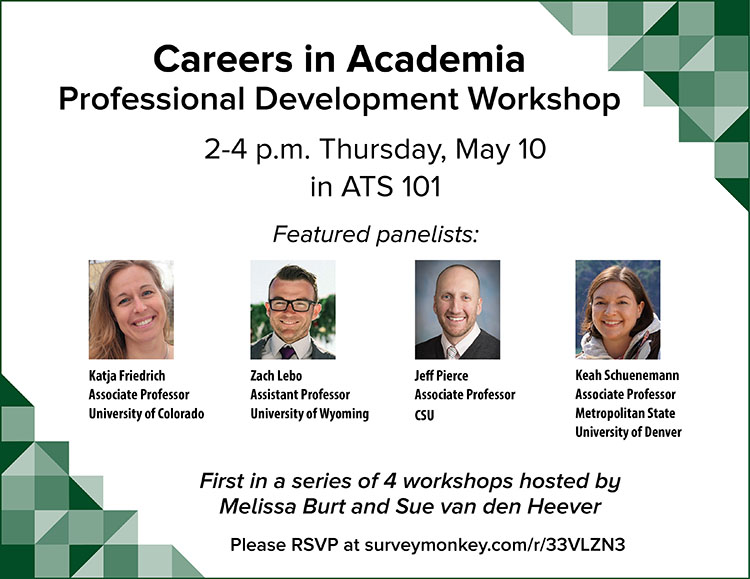
Prof. Sue van den Heever and Melissa Burt are hosting a professional development workshop on careers in academia. The first workshop in a series of four will take place 2-4 p.m. Thursday, May 10, in ATS 101. The featured panelists are Katja Friedrich from the University of Colorado, Zach Lebo from the University of Wyoming, Keah Schuenemann from the University of Denver, and our own Jeff Pierce. If you plan to attend, please RSVP for the professional development workshop here.
May 1, 2018
Air quality study co-authored by Emily Fischer published in PNAS
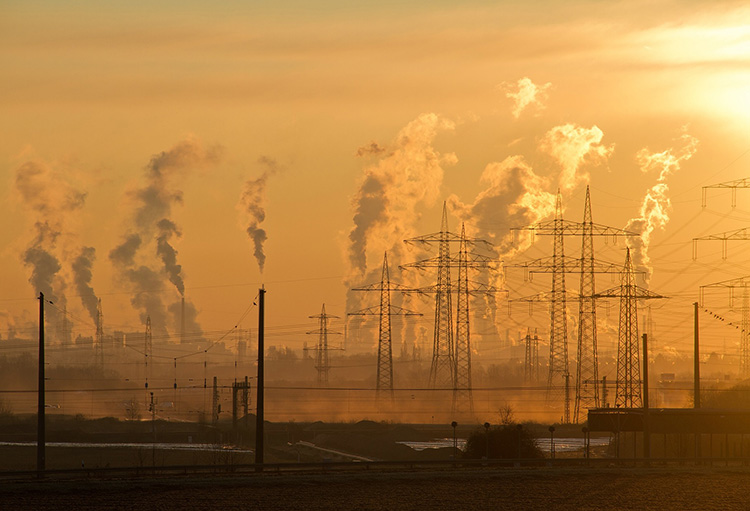
A paper published Monday by Proceedings of the National Academy of Sciences shows that air quality improvements have slowed. It attributes this stalled emissions decline to industrial, construction, residential and diesel sources, which have increased relative to decreasing car and power plant emissions. The study “Unexpected slowdown of US pollutant emission reduction in the past decade” was co-authored by Assistant Professor Emily Fischer.
Read more about the study in this press coverage:
Los Angeles Times: “Slowdown in emissions reductions could explain stalled progress on smog, study finds”
Bloomberg: “Your air isn’t getting as clean as the EPA said it is”
USA Today: “The USA’s long battle against air pollution isn’t over yet, as air quality improvements are slowing down”
Mashable: “Gains in reducing America’s smog problem have hit a dramatic slowdown”
Associated Press: “America’s air isn’t getting cleaner as fast as it used to“
April 25, 2018
Professors Randall and Denning to present at SummerFest 2018: Mission Earth
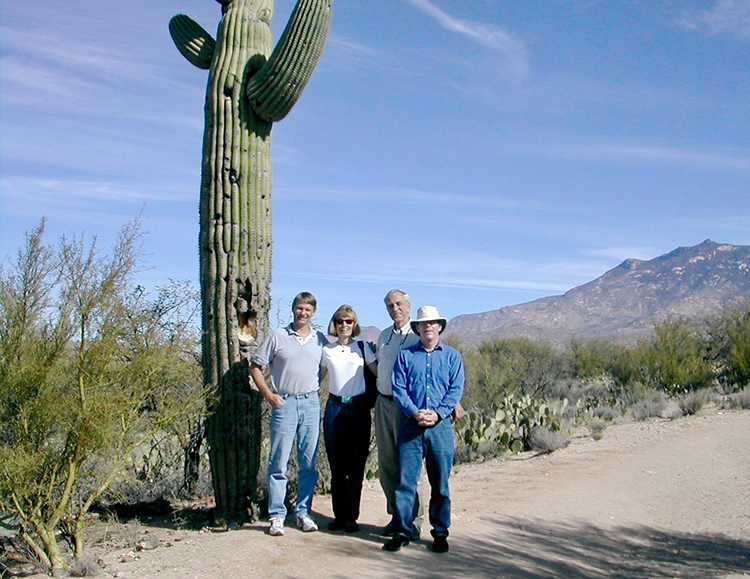
Two Department of Atmospheric Science professors will participate in events to honor Piers Sellers and educate on the topic of climate change June 24 through July 20 in Fort Collins. SummerFest 2018: Mission Earth is dedicated to the life and work of the late astronaut and scientist. The festival will explore a subject that was important to Sellers, climate change and its impact on the planet, through music, visual arts and science in four weeks of concerts, lectures, films, art exhibitions and STEAM-based educational events for all ages.
Sellers was a British-American meteorologist, pilot and astronaut who flew on three space shuttle missions. He served as the Director of Earth Sciences and Deputy Director for Science and Exploration at NASA Goddard Space Flight Center. Before joining the astronaut corps, Sellers researched how the Earth’s biosphere and atmosphere interact, at NASA Goddard Space Flight Center. It was in this capacity that Sellers and now University Distinguished Professor David Randall became colleagues.
“Piers was more than a colleague. He was my friend for about 30 years. He was a truly amazing person,” Randall reflected.
Randall continued to work with Sellers after moving to CSU. He was a member of Sellers’ science team on a NASA project that lasted 10 years. Randall even traveled to Florida for two of Sellers’ shuttle launches.
Sellers was diagnosed with pancreatic cancer in 2015. He spent the last year of his life promoting awareness of climate change. The Goddard Space Center team is honoring his wishes by holding a reunion during the first week of the festival.
Randall and other members of Sellers’ climate science team, including Professor Scott Denning, will share science and stories about Sellers at several events throughout the festival.
Grand opening of Ouroboros – June 25
Randall will speak at the grand opening of Ouroboros 7-8:30 p.m. Monday, June 25, at CSU Lory Student Center Curfman Gallery. Ouroboros, a multimedia art installation by SummerFest 2018 artist-in-residence Kate Doyle, combines video, animation, and sounds from space and Earth, along with music by Bruce Adolphe and special effects by Eric Robertson. Doyle was inspired by Sellers’ optimism and heroic commitment, despite his increasing physical challenges and pain. She hopes this collaborative project that melds arts and science will raise consciousness on climate change and promote solutions through a global conversation.
‘I saw how fragile and infinitely precious our world is’ – June 29
Randall will present a slide show honoring Sellers, and Denning and Randall will participate in a panel discussion 7-8:30 p.m. Friday, June 29, at CSU Lory Student Center Curfman Gallery. At this event composer Bruce Adolphe will premiere his piece, “I saw how fragile and infinitely precious the world is,” inspired by a quote spoken by Sellers as he viewed Earth from space.
Denning also will present two talks on the festival topic:
- “Simple, Serious, Solvable: The 3 S’s of Climate Change,” 6:30-9 p.m. Tuesday, July 17, at Block One Events
- “Planetary Metabolism: The Breathing of the Earth,” 12-1 p.m. Monday, June 25, at The Lyric
In “Simple, Serious, Solvable: The 3 S’s of Climate Change,” Denning will discuss how we must learn to live well without wasting energy and make energy without setting carbon on fire as climate change becomes the most serious problem in the world. “Planetary Metabolism: The Breathing of the Earth” will cover how NASA satellites document planetary biology, allow us to understand and predict the incredible process of how our planet breathes, and help us understand our place in it.
Both Randall and Denning will participate in a panel on what businesses can do to save money and act on climate change. At this event, Fort Collins businesses and city employees will facilitate a dialogue around the actions they’ve taken to benefit the bottom line and help protect our climate. The discussion will be held 12-1 p.m. Wednesday, June 27, at Odell Brewery.
Tickets for SummerFest 2018 range from $20 to $45 and can be purchased at the link or by calling 970-305-2261. There are a limited number of $10 student tickets available for each event. Advanced ticket purchase is recommended.
About the festival
Every season Off the Hook Arts presents music and visual arts in combination with issues of science or social conscience. Now in its seventh season, SummerFest raises funds to benefit year-round education programs offered through the Off the Hook Arts Academy.
For more information, visit the SummerFest 2018 website.
Photo: From left, Piers Sellers, Mary Kay Randall, Joe Berry from the Carnegie Institution at Stanford, and David Randall. Photo taken in 2003 by Mandy Sellers.
April 23, 2018
Ben Toms wins poster presentation award at tropical meteorology conference
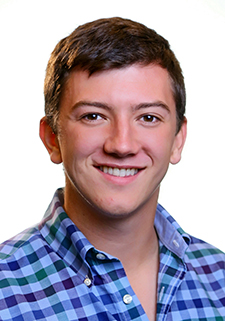
Ben Toms, advised by Sue van den Heever, was recognized with an Outstanding Poster Presentation Award last week at the 33rd Conference on Hurricanes and Tropical Meteorology in Ponte Vedra, Florida. He received the award for his project “A Coherent Image of Teleconnections Across the Globe Associated with the Madden-Julian Oscillation,” co-authored by Elizabeth Barnes and Sue van den Heever. The poster was awarded the first-place prize in the Large-Scale Dynamics section.
Toms said the conference was a fantastic opportunity to meet brilliant tropical-minded scientists from across the country.
“My travel was sponsored by the MAC Foundation, so I am grateful for their support that allowed me to attend the conference.”
April 17, 2018
Russ Schumacher to give final ‘What’s Brewing’ talk this semester

Associate Professor Russ Schumacher will talk about “attempts to bridge the weather-climate interface in research and career path” in this semester’s final installment of FORTCAST’s What’s Brewing in Weather and Climate series. Schumacher also serves as Colorado State Climatologist and director of the Colorado Climate Center.
Discussion will begin 6:30 p.m. Tuesday, April 24, upstairs at Tap & Handle. Please RSVP here. CSU students, bring your ID for $2 off drafts.
Contact amsfortcast@gmail.com with any questions.
April 13, 2018
ATS researchers fly and sail to stormiest place on Earth to study cloud processes
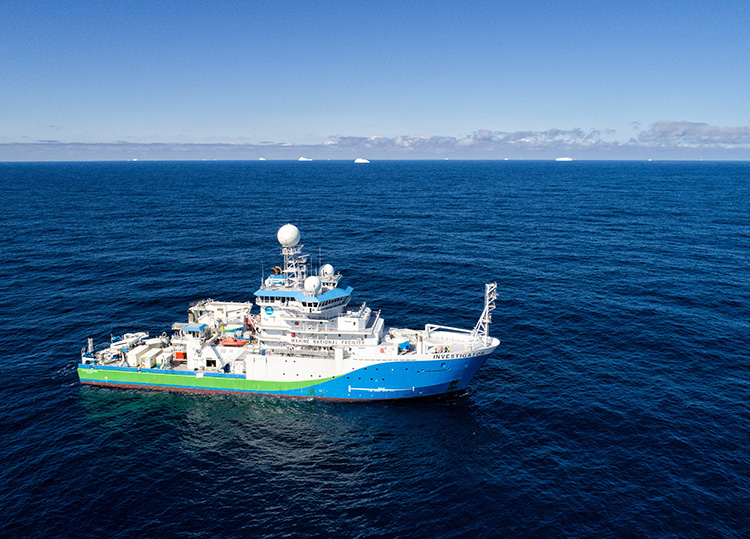
By ship and by plane, CSU Department of Atmospheric Science researchers recently ventured to the stormiest place on Earth, the Southern Ocean, to collect cloud, aerosol and precipitation data for a project known as SOCRATES. Knowledge gained during the Southern Ocean Clouds, Radiation, Aerosol Transport Experimental Study is expected to enhance weather and climate modeling and forecasting capabilities across the globe.
Graduate student Kathryn Moore, stationed aboard the research vessel (R/V) Investigator, collected data and samples to document primary ice nucleation and its influence on cloud phase. Primary ice nucleation is the formation of the first ice crystals in a cloud, which usually occurs on atmospheric aerosol particles known as ice nucleating particles, and cloud phase is the state of the cloud, liquid or ice.
“The SOCRATES project was designed to comprehensively sample and observe the interactions of aerosols with supercooled and mixed-phase clouds, to gain a better understanding of the aerosol-cloud interactions in this region, and to provide new datasets and parameterizations with which to test and improve weather and climate models,” Moore explained.
The research vessel embarked from Hobart, Tasmania on Jan. 11 and returned Feb. 22. Moore said the trip was remarkably smooth considering the region.
“There were about four to six days where waves were breaking over the bridge, six decks up, and it was too rough to get to the lab where the instruments were located. Other days varied from relatively flat, when we were close to the ice edge by Antarctica, up to six-meter swells. The Investigator has anti-roll tanks, which help reduce side-to-side motion, and I don’t suffer much from seasickness, which helps a lot when there are storms and high winds.”
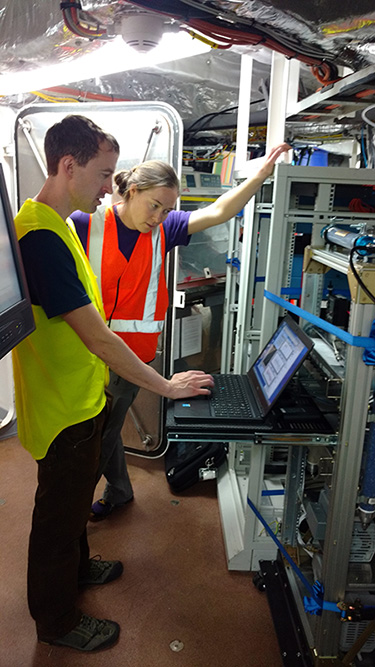
Ezra Levin and Kathryn Moore test equipment aboard the R/V Investigator before it set sail Jan. 11, 2018. Photo by Paul DeMott.
Hands-on data collection was necessary to advance our understanding of cloud formation over the Southern Ocean because our current assessment is based almost entirely on satellite observations. This gap in knowledge leads to inaccurate climate models.
“The Southern Ocean is one of the most remote regions on Earth, far from anthropogenic and terrestrial aerosol sources, and so it is an ideal place to study natural aerosols and their interactions with clouds and radiation. Current weather and climate models struggle to represent this region,” Moore said.
CSU’s team of scientists had instruments aboard both the R/V Investigator, an Australian Marine National Facility research vessel, and HIAPER, or the High-performance Instrumented Airborne Platform for Environmental Research. HIAPER is a highly modified Gulfstream V jet that is owned by the National Science Foundation (NSF) and operated by the National Center for Atmospheric Research (NCAR) in Boulder. The project is a collaboration among U.S. universities and Australian scientists, with the U.S. portion funded by the NSF and supported by NCAR.
“It was truly a multinational campaign,” said senior research scientist Paul DeMott, who led the group from CSU. “Our CSU team role in general was to collect data to address an overarching hypothesis that cloud phase and lifetimes behind polar fronts in the Southern Ocean are controlled by ice nucleating particle populations unique to this region (partly due to ocean organic and biological particle emissions), with the consequence that this helps to explain errors in global climate model predictions of solar radiation reaching the ocean surface.”
Ice nucleating particles (INPs) are particles suspended in the atmosphere, which provide the foundation for the most common method of ice formation in the atmosphere. Though the INPs are very rare, they have strong control over the phase, liquid or ice, of a cloud. Once a cloud has glaciated, or turned from predominantly liquid to ice, its reflective properties and radiative effect change significantly, and it can begin to precipitate as snow or ice, rather than just rain.
DeMott shared flight scientist duties with recent CSU graduate Christina McCluskey, now an NCAR Advanced Study Program postdoctoral fellow. DeMott and McCluskey utilized two methods for assessing INP concentrations and a bioaerosol detector while flying over the Southern Ocean, just as Moore was collecting similar samples using the same methods at sea level, along with water samples.
“As expected, the concentrations of INPs over the Southern Ocean were some of the lowest on Earth, both in the marine boundary layer at the surface and higher up in the troposphere,” Moore said.
Still, the extraordinarily low numbers of INPs in the air were somewhat surprising to DeMott, as were some other discoveries.
“Clouds were also more multilayered than we anticipated, and this has implications for radiative transfer and satellite detection,” DeMott said.
Some flights had to be postponed or canceled due to unusual winds over Hobart, but DeMott said most flights were not especially turbulent.
“I only felt queasy once in the entire campaign. We primarily had to be mindful of two things – icing of the aircraft wings and instrument pods, and ingestion of too much sea salt into the engines.”
There were times the HIAPER had to climb above clouds or descend to dissipate accumulating ice. The flight crew also limited time spent at the lowest level over the ocean in high winds to avoid salt accumulation. At least once during the study, NCAR had the engines power-washed to remove salt buildup.
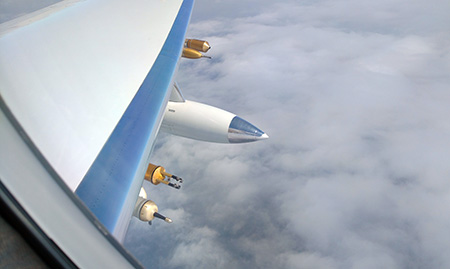
Cloud probes collect data on the wing of the HIAPER. Photo by Paul DeMott.
“I felt we were always safe, just a long way from home or a runway if anything had happened!” DeMott said.
Though their two months of scientific journeys by sky and by sea have come to an end, much of the work has just begun.
“Our job now is to process physical samples, analyze our own data and to integrate that with in situ data on cloud dynamics and microphysics, and remote sensing data on the same from the ships and aircraft toward answering key project science questions. It will be a massive collaborative effort,” DeMott said.
Research scientist Tom Hill and postdoctoral fellow Ezra Levin supported preparations and installations for the project, and Hill will play a major role in analyzing the collected aerosol samples.
“Some of our goals, once all the data and samples are analyzed, are to identify what the major sources of INPs in the Southern Ocean region are, characterize the biological species present through DNA analyses, and to develop a parameterization that describes INP emissions and atmospheric number concentrations that can be used in weather and climate models to improve predictions in this region,” Moore said.
Given the broad scope of the expedition and the vast amount of analysis yet to perform, discoveries and definitive conclusions are still on the horizon. However, according to DeMott, the SOCRATES project already has been a success.
“My takeaway was that we met the objective to perform the most comprehensive characterization of Southern Ocean clouds and aerosols yet undertaken, that our data sets are rich, and that we will be able to answer our major hypotheses.”
Photo at top: Australian Marine National Facility (MNF) research vessel, R/V Investigator. Photo by Kendall Sherrin (CSIRO, AU).
April 12, 2018
Jeff Pierce awarded prestigious Monfort Professorship
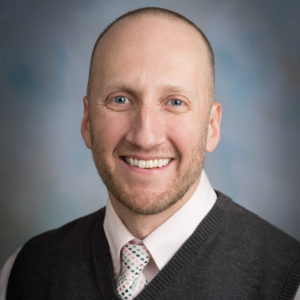
Associate Professor Jeff Pierce was named one of CSU’s newest Monfort Professors at the Celebrate CSU Awards Ceremony yesterday. The Monfort Professorship is CSU’s premier award recognizing research accomplishments and potential of mid-career faculty. The program is sponsored by the Monfort Family Foundation to help CSU recruit and retain talented faculty members.
Two CSU faculty members are selected as Monfort Professors each year. They retain this designation for two years and receive $75,000 per year to further their teaching and research. Pierce plans to use his Monfort award to investigate the effectiveness of pollution emission control strategies in China, a collaborative effort with Ellison Carter, assistant professor in Civil and Environmental Engineering. Pierce is the fourth Department of Atmospheric Science faculty member to be named a Monfort Professor since the program began in 2002. Past recipients were Scott Denning, Dave Thompson and Sue van den Heever.
Read more about Pierce and this recognition.
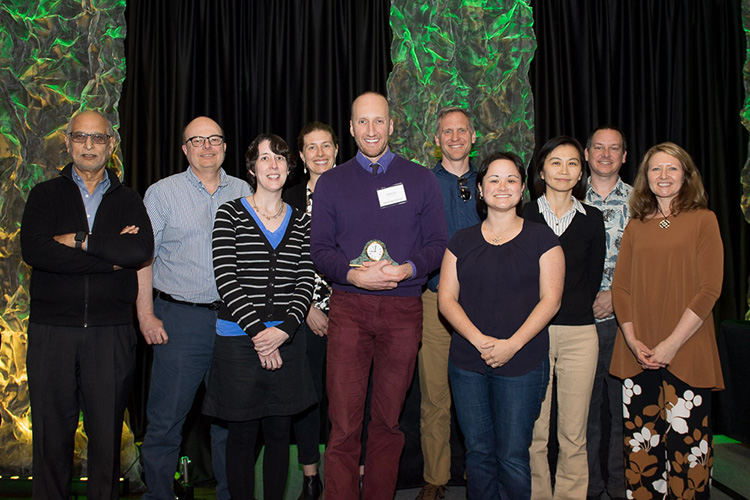
Jeff Pierce, center, is joined by his wife, Ellen Brennan-Pierce (at his right), and members of the Department of Atmospheric Science following the ceremony where he received the Monfort award April 11, 2018.
April 11, 2018
Alex DesRosiers selected to receive AMS fellowship
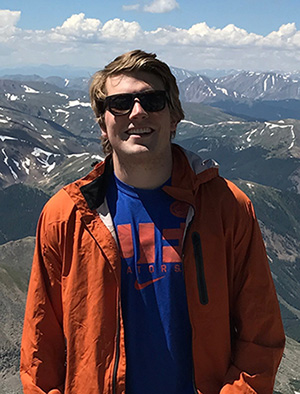
Alex DesRosiers, who will join Associate Professor Michael Bell’s group as an M.S. student in the fall, has been chosen to receive an American Meteorological Society Graduate Fellowship.
“I am thrilled for the privilege to be an AMS fellow,” DesRosiers said, after receiving notification from AMS President Roger Wakimoto. “Coming from a non-meteorology background with a desire to join that field, the AMS conference always provided an excellent spring board for me to network in the field I desired to join while learning about the many exciting projects going on this year.”
DesRosiers is currently an environmental engineering student at the University of Florida.
“The fellowship will help to fund my objective of studying the intensification process of tropical cyclones during my graduate studies in Dr. Michael Bell’s research group. I also look forward to growing professionally through the opportunities and events open to fellowship recipients at the AMS Annual Meeting,” he said.
April 9, 2018
Thomas Vonder Haar co-authors book on founder of satellite meteorology
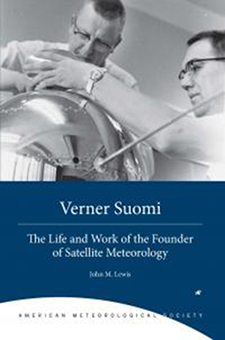
University Distinguished Professor Emeritus Thomas Vonder Haar has co-authored a book about Verner Suomi, the founder of satellite meteorology. Vonder Haar and six other authors drew on personal letters and oral histories of the Finnish-American educator, inventor and scientist to piece together Verner Suomi: The Life and Work of the Founder of Satellite Meteorology.
The book’s abstract explains how Suomi forever changed the field of meteorology:
“In the early days of space science, Suomi brought his pragmatic engineering skills to bear on finding ways to use our new access to space to put observational instruments into orbit. In 1959, his work resulted in the launching of Explorer VII, a satellite that measured Earth’s radiation budget, a major step in our ability to understand and forecast weather. Today, NOAA’s GOES system continues his legacy by providing a continuous stream of environmental data from space.”
“It was a pleasure to work with lead author and historian John Lewis and other colleagues on the new book,” Vonder Haar said. “[Suomi] was my Ph.D. advisor at the University of Wisconsin, and I worked closely with him on several research projects for 15 years beginning in 1963. Professor Suomi was a natural engineer and inventor with a deep understanding of global and local atmospheric systems.”
You can read more about the book or purchase it at the AMS Bookstore.
April 6, 2018
Kathryn Moore and Katelyn O’Dell receive National Science Foundation fellowships
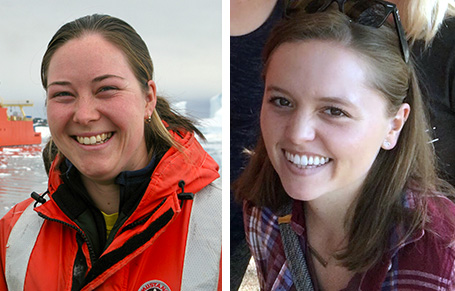
Graduate students Kathryn Moore and Katelyn O’Dell have been selected to receive 2018 National Science Foundation (NSF) Graduate Research Fellowship Program (GRFP) fellowships. Both Moore, advised by Paul DeMott and Sonia Kreidenweis, and O’Dell, advised by Jeff Pierce and Emily Fischer, were chosen for the field of Atmospheric Chemistry. Their selection was based on their “demonstrated potential to contribute to strengthening the vitality of the U.S. science and engineering enterprise.” The GRFP provides financial support for a maximum of three years.
“I’m very excited and honored to have been selected as an NSF Graduate Research Fellow,” Moore said. “Receiving this fellowship gives me the flexibility to conduct research that I am excited about and invested in. One aspect I am particularly excited about is the opportunity to access other NSF funds that are only available to NSF graduate research fellows. These include the GROW program, which provides funding for international research collaborations, and GRIP, which allows fellows to pursue internships at federal agencies.”
O’Dell will use the financial support to study wildfires and their impacts on air quality.
“I’m very honored to have been selected as an NSF Fellow this year and am excited to work on new and exciting research questions that I’m very passionate about,” she said.
April 5, 2018
SOURCE: CSU team predicts slightly above-average 2018 Atlantic hurricane season
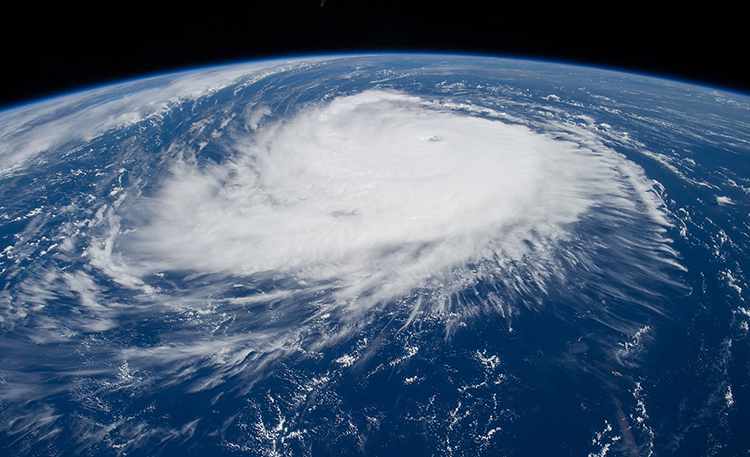
Colorado State University hurricane researchers are predicting a slightly above-average Atlantic hurricane season in 2018, citing the relatively low likelihood of a significant El Niño as a primary factor.
Read the SOURCE article, “Slightly above-average 2018 Atlantic hurricane season predicted by CSU team.”
See Michael Bell’s 9News interview.
April 4, 2018
PROGRESS update ‘Welcoming Women into the Geosciences’ published on Eos
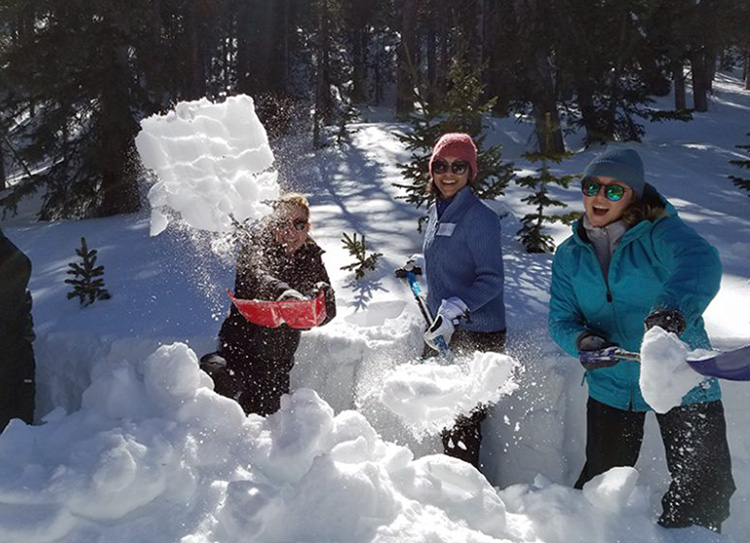
Women are underrepresented in the geosciences, in part because of systemic attitudes and behaviors. Why do we need to close this gap? Diverse teams produce better ideas—they set the bar for scholarly excellence. So what are the best ways to welcome the next generation of women into geoscience careers?
The Earth Science Women’s Network (ESWN) set out to find and test some answers to this question.
Read the article, “Welcoming Women into the Geosciences.”
Photo: Early-career scientists and their mentors share a lighthearted moment while learning firsthand about snow crystal formation and snowpack metamorphism at a snow science event in Laramie, Wyo. The event, organized by the University of Wyoming’s Multicultural Association of Student Scientists, included participants from PROGRESS, a program that supports undergraduate women as they begin careers in the geosciences. Credit: Ilana Pollack
April 3, 2018
CSU alum will examine perceptions and responses for evolving weather risks

CSU alumna Julie Demuth, from the National Center for Atmospheric Research, will discuss perceptions and responses for evolving weather risks through interviews and Twitter data at the next installment of FORTCAST’s What’s Brewing in Weather and Climate series. Demuth has an M.S. in Atmospheric Science and a Ph.D. in Public Communication and Technology, both from CSU.
Discussion will begin 6:30 p.m. Tuesday, April 10, upstairs at Tap & Handle. Please RSVP here. CSU students, bring your ID for $2 off drafts.
Contact amsfortcast@gmail.com with any questions.
April 2, 2018
Graeme Stephens awarded Mason Gold Medal from Royal Meteorological Society

University Distinguished Professor Emeritus Graeme Stephens has been selected to receive the 2017 Mason Gold Medal from the Royal Meteorological Society. The medal will be presented May 16 at the society’s annual meeting in London.
The Royal Meteorological Society is the UK’s professional and academic society for weather and climate. Sir John Mason, a passionate scientist himself, funded the Mason Gold Medal to be awarded biennially to a Fellow of the Society “for outstanding contributions to the understanding of the fundamental processes that determine the variability and predictability of weather and climate.” The medal ranks alongside the Symons Gold Medal as the premier award of the society and is bestowed in alternate years to the Symons medal.
“It’s a great honor and recognition of much of my research at CSU!” Stephens said in response.
March 30, 2018
Next Teen Science Café: Lasers and their many uses
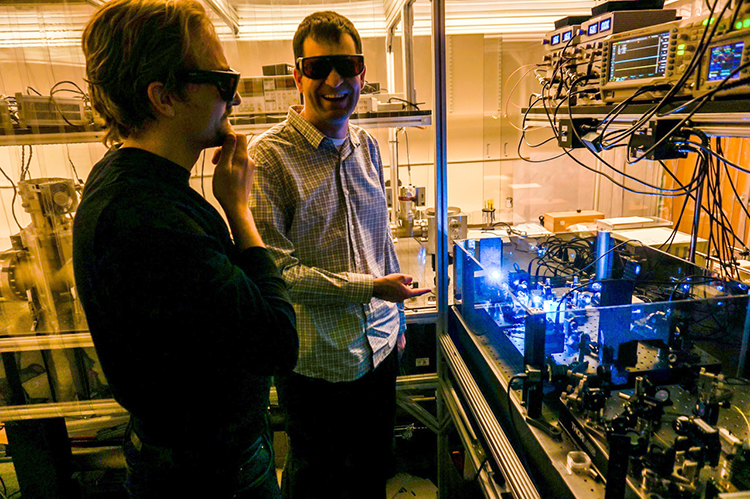
What exactly do lasers do? Lots of things – from trapping atoms to keeping time in atomic clocks. They’re used in cooling, fusion and technological applications, including self-driving cars, GPS and wind farm design. Zak Burkley from CSU’s Department of Physics will talk about the many uses of lasers at the next Teen Science Café on April 11.
When: 5-7 p.m., with the presentation starting at 5:30 p.m., Wednesday, April 11
Where: Everyday Joe’s Coffee House, 144 S. Mason St., Fort Collins
Presenter: Zak Burkley from CSU’s Department of Physics
RSVP to the April 11 Teen Science Café here.
April 11 Teen Science Café flier
The Front Range Teen Science Café is part of a larger national network of science cafés for teens. ESMEI’S Teen Science Café brings scientists and teens together for a conversation about science in a local coffee shop, Everyday Joe’s Coffee House. A primary goal of the café is for teens to increase their understanding of the nature of science and to develop a realistic perception of scientists and the lives they lead, which they sometimes do not get in school.
March 27, 2018
Phil Klotzbach reviews 2017 hurricane season in Mission: Water cover story
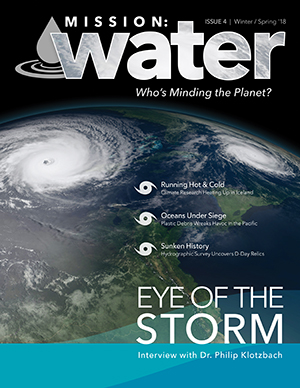
Dr. Phil Klotzbach is a research scientist in the Department of Atmospheric Science at Colorado State University. He leads the development of hurricane forecasts issued during peak months of the year. In an Interview with Mission: Water, Klotzbach reviews the science behind 2017’s devastating hurricane season.
Read the article, “Eye of the Storm.”
March 19, 2018
Christine Chiu profiled as ARM User Executive Committee member on DOE website
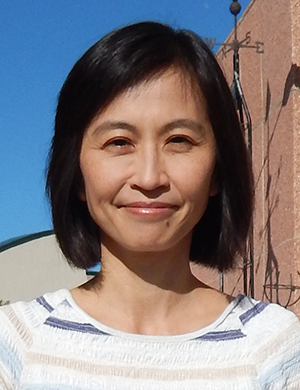
Associate Professor Christine Chiu is featured in a User Executive Committee member profile on the U.S. Department of Energy Atmospheric Radiation Measurement (ARM) Climate Research Facility website. Read the article, “UEC profile: Christine Chiu’s path to better cloud observations.”
March 16, 2018
Eos features study led by Jack Kodros on health impacts of burning solid fuels
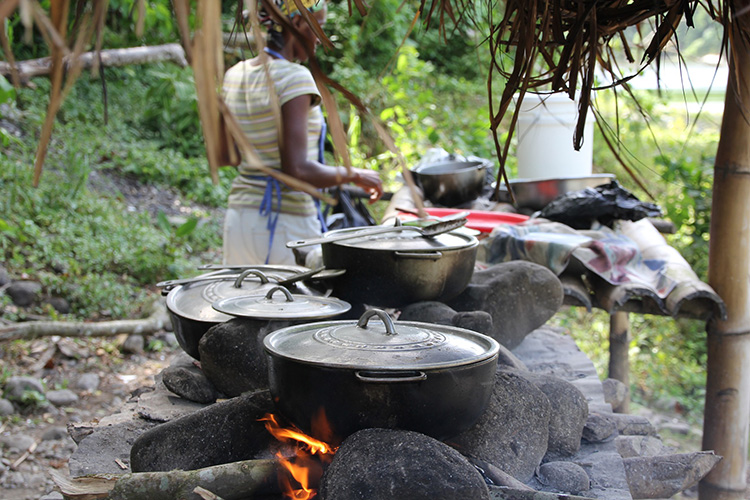
This week’s edition of AGU publication Eos featured a study led by Ph.D. candidate Jack Kodros on the health impacts of burning solid fuels. Associate Professor Jeff Pierce as well as several other researchers from CSU’s Walter Scott, Jr. College of Engineering contributed to the study.
In the absence of reliable access to electricity and clean cooking technology, nearly 40 percent of the world’s population burns solid fuels for cooking and home heating. Smoke particles produced by these fires are harmful to human health. While previous studies have estimated mortality from either household or ambient air pollution separately, Kodros’ study quantifies the combined effects of both. It targets gaps in knowledge that, once overcome, could lead to more accurate mortality estimates.
“The main goal of this study was to highlight specific data sources that contribute the most uncertainty to estimates of premature mortality. These data sources include statistics on how people die in different countries, the relationships between death and air pollution, and air pollution concentrations. We provide an estimate of which of these data sources should be the focus of future research in order to most improve our understanding of the global health impact of exposure to particulate matter,” Kodros explained.
Ultimately, it is important to communicate accurate estimates of premature mortality due to air pollution to policy makers, Kodros said.
Read the Eos article, “Solid-Fuel Use Puts Human Health at Risk.”
Read the study, “Quantifying the Contribution to Uncertainty in Mortality Attributed to Household, Ambient, and Joint Exposure to PM2.5 From Residential Solid Fuel Use.”
Photo at top: Creative Commons image
March 14, 2018
Elizabeth Barnes receives National Science Foundation CAREER award
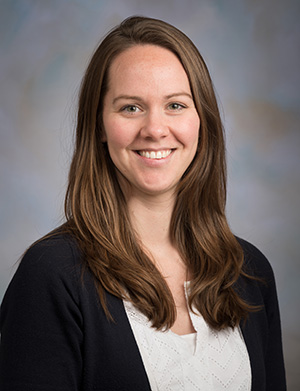
Assistant Professor Elizabeth (Libby) Barnes has been selected for a CAREER award from the National Science Foundation (NSF). The Faculty Early Career Development (CAREER) Program offers the NSF’s most prestigious grants in support of early-career faculty who have the potential to serve as academic role models in research and education.
“I’m incredibly excited,” Barnes said in response to the announcement. “The CAREER offers five years of funding to explore both passions of mine: science and education.”
Integrating education and research is central to the program’s goal. With CAREER, the NSF boosts promising and talented junior faculty toward lifelong leadership and scientific advances in their fields. The awards are granted annually, and the selection process is one of the most competitive within the NSF.
Barnes will use her grant to study causal connections between the Arctic and mid-latitudes.
“I’m particularly excited because I am being funded to work on applying exciting statistical techniques to address questions of causality in climate science – that is – ‘who caused who?’ Or, which came first, the chicken or the egg? I’m specifically going to be studying the links between the tropics-midlatitudes-Arctic and how they communicate with each other and who communicates first.”
Barnes’ project also will create an online database for scientists to utilize and expand.
“I get to bring my love for data science/analysis to the broader community by designing and implementing an online resource for atmospheric sciences that explains and shows examples of mathematical and statistical tools for analyzing data. My hope is that by the end of this award it will function something like Wikipedia, so scientists across the globe can add to it and use it as a resource.”
The Department of Atmospheric Science is well-represented among recipients of this distinction. Other recent CAREER award recipients from the department include Associate Professor Russ Schumacher, Associate Professor Michael Bell and former Associate Professor Thomas Birner.
Read more about Elizabeth Barnes and her research.
March 7, 2018
Next Teen Science Café: The Teal Housewives of Colorado
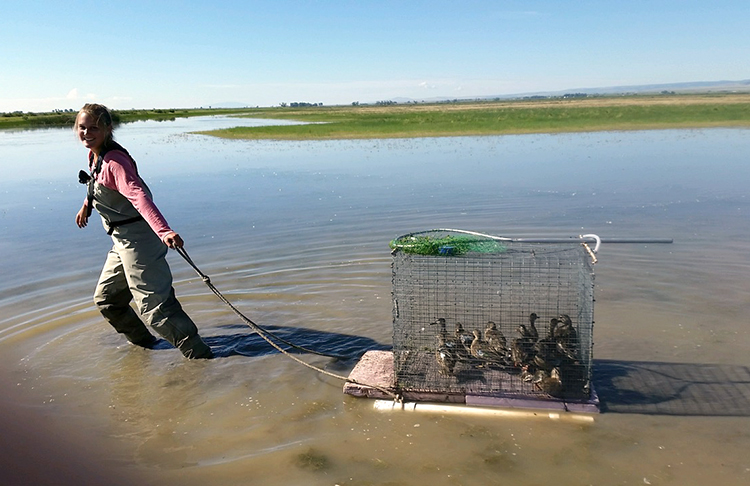
How do ducks fly all the way to Colorado from South America and still find time to sit on eggs for a month? Why would they even bother coming up to the mountains when they could stay in the balmy tropics? Casey Setash from CSU’s Department of Fish, Wildlife, and Conservation Biology will answer these questions and more at the next Teen Science Café on March 21. She will discuss the cinnamon teal and the ways it makes the most of its time in Colorado.
When: 5-7 p.m., with the presentation starting at 5:30 p.m., Wednesday, March 21
Where: Everyday Joe’s Coffee House, 144 S. Mason St., Fort Collins
Presenter: Casey Setash from CSU’s Department of Fish, Wildlife, and Conservation Biology
RSVP to the March 21 Teen Science Café here.
March 21 Teen Science Café flier
The Front Range Teen Science Café is part of a larger national network of science cafés for teens. ESMEI’S Teen Science Café brings scientists and teens together for a conversation about science in a local coffee shop, Everyday Joe’s Coffee House. A primary goal of the café is for teens to increase their understanding of the nature of science and to develop a realistic perception of scientists and the lives they lead, which they sometimes do not get in school.
March 5, 2018
Zitely Tzompa selected as inaugural Colorado Science and Engineering Policy Fellow
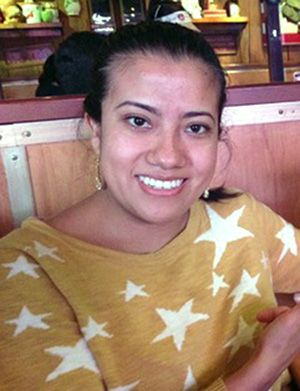
Ph.D. candidate Zitely Tzompa has been chosen to be among the first Colorado Science and Engineering Policy Fellows. The fellowship, recently created by State Representatives Chris Hansen and Bob Rankin, is an eight-week summer internship for STEM majors, where they will conduct policy research and learn more about STEM policies through seminars and industry site visits.
Public policy makers consult and collaborate with STEM experts for knowledge and advice in navigating the complex challenges of energy, water, public health and transportation. Fellows will observe this interaction and present their own capstone public policy projects, after undergoing a policy “boot camp” that will teach them about the policy-making process and the skills they’ll need to be a part of it.
Tzompa looks forward to gaining firsthand experience of how scientists can contribute to policy making.
“The best part of the fellowship is that I will have the opportunity to design, write and present my own policy proposal to legislators, industry figures and university representatives.”
Fellowship participants were sought from Colorado State University, University of Colorado Boulder, University of Denver, Metropolitan State and the Colorado School of Mines. Each school was allowed to place three fellows, and the Walter Scott, Jr. College of Engineering was assigned one of the spots. Two applications were selected at the college level and submitted to Hansen and Rankin. Tzompa and another Walter Scott, Jr. College of Engineering applicant then interviewed with the representatives at the Colorado State Capitol Building, and Hansen and Rankin made the final selection.
“The competition was fierce, but we were very impressed by what you could bring to the program,” read Tzompa’s notification from a member of Hansen’s staff.
The program, which runs May 21 through July 13, will be based mainly at the capitol building and will include field trips, seminars, workshops and social events. Fellows will receive a stipend.
Tzompa eagerly anticipates the impact the fellowship will enable her to make.
“This is an exciting time to be a scientist, and I look forward to contributing to both the scientific understanding and the environmental policy related to air quality.”
February 21, 2018
SOURCE: Distant tropical storms have ripple effects on weather close to home
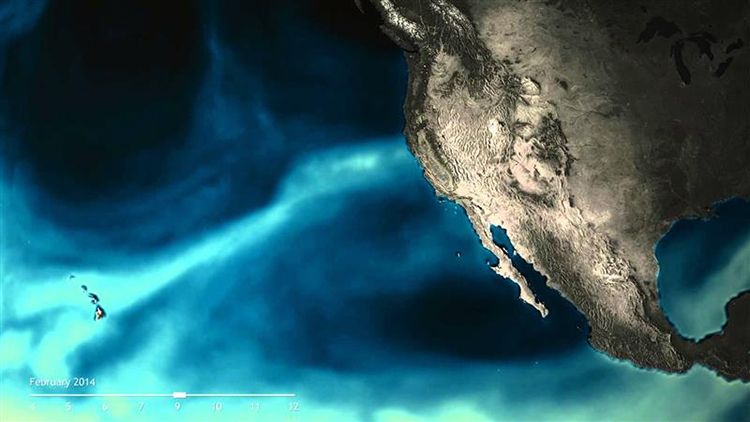
The famously intense tropical rainstorms along the Earth’s equator occur thousands of miles from the United States. But atmospheric scientists know that, like ripples in a pond, tropical weather creates powerful waves in the atmosphere that travel all the way to North America and have major impacts on weather in the U.S.
These far-flung, interconnected weather processes are crucial to making better, longer-term weather predictions than are currently possible. Colorado State University atmospheric scientists, led by professors Libby Barnes and Eric Maloney, are hard at work to address these longer-term forecasting challenges.
In a new paper in npj Climate and Atmospheric Science, the CSU researchers describe a breakthrough in making accurate predictions of weather weeks ahead. They’ve created an empirical model fed by careful analysis of 37 years of historical weather data. Their model centers on the relationship between two well-known global weather patterns: the Madden-Julian Oscillation and the quasi-biennial oscillation.
According to the study, led by former graduate researcher Bryan Mundhenk, the model, using both these phenomena, allows skillful prediction of the behavior of major rain storms, called atmospheric rivers, three and up to five weeks in advance.
Read the full SOURCE article, “Distant tropical storms have ripple effects on weather close to home.”
Read more about this research on the NOAA Oceanic and Atmospheric Research website.
Image at top: Atmospheric river off California, February 2014. Credit: Still from an animation by NOAA Climate.gov
February 20, 2018
Kristen Rasmussen chosen for AMS Early Career Leadership Academy

Assistant Professor Kristen Rasmussen has been selected as one of 35 finalists to participate in the first class of the American Meteorological Society’s Early Career Leadership Academy (ECLA). The academy is intended for high-level performers and is structured around opportunities to improve professional skills, discover leadership potential, and build a strong cohort community of early career professionals in weather, water and climate (WWC) science enterprise.
“I am thrilled to be selected as one of 35 participants in the 2018 AMS Early Career Leadership Academy to enhance my development and leadership skills as an early career scientist and professor, and to help build a growing network of early career leaders,” Rasmussen said in response to her acceptance in the academy.
According to the ECLA Web page, the academy will bring together a select group of early career individuals, in particular, women and underrepresented minorities, for an immersion experience in leadership, such as creative problem-solving; conflict resolution; building trust and enhancing communication skills. ECLA is a professional development experience built around emerging trends in weather, water and climate science enterprise that will shape the future of professions. Topics that will be covered include workplace issues, technology, crisis management, building trust, business acumen for geoscientists, job market volatility and key societal trends.
Rasmussen looks forward to the skills and network she’ll gain from the academy.
“I hope to improve my professional skills, discover my leadership potential, and help build a strong community of early career professionals.”
February 19, 2018
Kai-Chih Tseng interview: Global rainfall pattern could extend predictions by 3 weeks
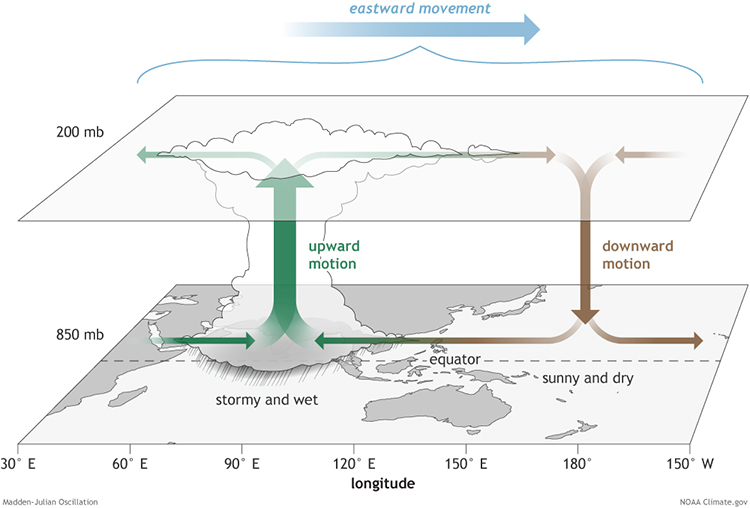
Earth’s atmosphere is chaotic, making it difficult for forecasters to predict weather more than 10-13 days in advance. However, research has increasingly shown that large-scale patterns of variability and relationships between states of the atmosphere in two faraway locations, called “teleconnections,” can help extend prediction skill beyond this limit.
“Few researchers have applied this mechanism to weather prediction,” said Kai-Chih Tseng, atmospheric science graduate student at Colorado State University (CSU). “Especially from two weeks to three months, which has been known as a ‘prediction desert’ in the past.”
A new study led by Tseng says that teleconnections with certain phases of a recurring tropical rainfall pattern could extend predictions up to 20-25 days in advance. The study is co-authored by Assistant Professor Libby Barnes and Professor Eric Maloney, both in CSU’s Department of Atmospheric Science.
The authors’ findings provide guidance on which tropical conditions might lead to improved forecasts beyond our current capability – and more time to prepare for extreme events.
Read the full NOAA Climate Program Office article.
Graphic at top: Upper Atmosphere Graphic of Madden-Julian Oscillation The surface and upper-atmosphere structure of the MJO when the enhanced convective phase (thunderstorm cloud) is over the Indian Ocean and the suppressed convective phase is over the west-central Pacific Ocean. Source: Climate.gov
February 18, 2018
Prof. Emeritus Richard Johnson named AAAS Fellow
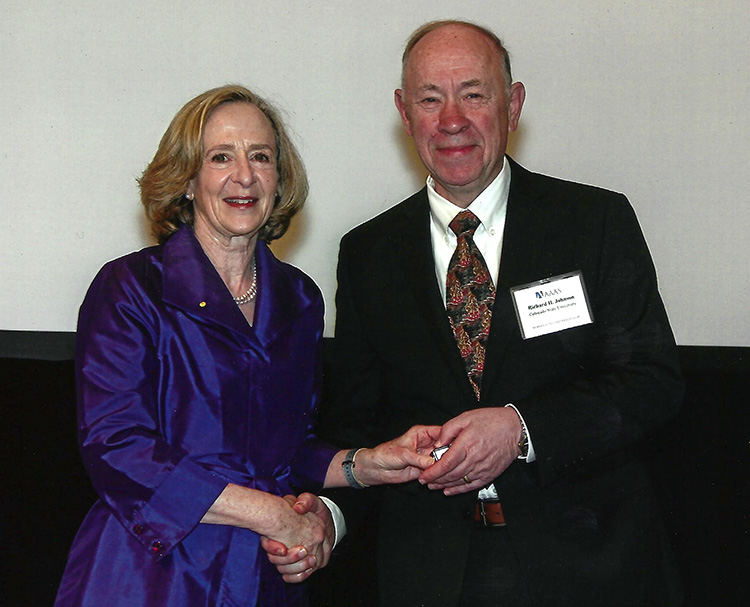
Professor emeritus of atmospheric science Richard H. Johnson has been named a fellow of the American Association for the Advancement of Science. He and another CSU faculty member, animal scientist Temple Grandin, were among the 396 honorees Feb. 17 during the 2018 AAAS Annual Meeting in Austin, Texas. They were presented with an official certificate and a gold and blue (representing science and engineering, respectively) rosette pin. The new AAAS Fellows were recognized for their “scientifically or socially distinguished efforts to advance science or its applications.”
Johnson was honored by the Section on Atmospheric and Hydrospheric Science for his “creative design, execution and analysis of field experiments that have given insight into the interaction of convective clouds with large-scale atmospheric circulation.”
Johnson joined the CSU faculty in 1980. His research has been in atmospheric convection and mesoscale dynamic processes in the tropics and mid-latitudes, and the interaction of convection with the planetary boundary layer. Severe convective storms, the tropical Madden-Julian Oscillation, and clouds in the tropics and their central role in global atmospheric circulation have been among his areas of study. A specific focus of study has been on the Asian monsoon, which affects over half the world’s population.
The American Association for the Advancement of Science (AAAS) is the world’s largest general scientific society and publisher of the journal Science. AAAS was founded in 1848 and includes nearly 250 affiliated societies and academies of science, serving 10 million individuals. The mission of the non-profit AAAS is to “advance science and serve society” through initiatives in science policy, international programs, science education and public engagement.
Photo: Richard Johnson shakes hands with AAAS President Susan Hockfield at the AAAS Fellows Forum Feb. 17.
February 16, 2018
Cogent Geoscience: An interview with Emily Fischer
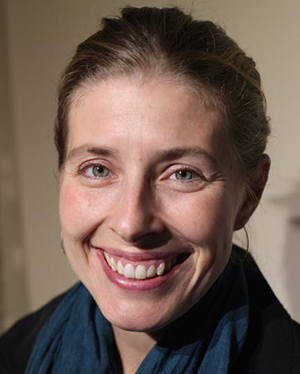
“Teams, not individuals, drive science forward.” – Prof. Emily Fischer
Fischer was among the women interviewed by Cogent Geoscience in honor of the International Day of Women and Girls in Science on Feb. 11. Read the full interview here.
February 2, 2018
Peter Marinescu, Minnie Park receive AMS presentation awards
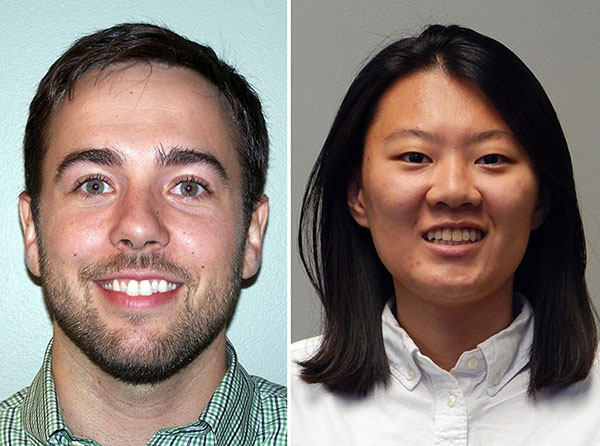
Peter Marinescu, advised by Sue van den Heever and Sonia Kreidenweis, and Minnie Park, advised by Sue van den Heever, were selected as winners of the Aerosol-Cloud-Climate Symposium student presentation competition at the 2018 AMS Annual Meeting in Austin. Peter was chosen for his presentation, “Comparing the Aerosol Impacts on Deep Convective Updraft Characteristics in Two Cloud-Resolving Models,” and Minnie was honored for her presentation, “Dependence of Aerosol Transport on Meteorological and Surface Properties within Tropical Sea Breeze Convection.”
January 19, 2018
Learn about wildlife in our neighborhoods at the next Teen Science Café
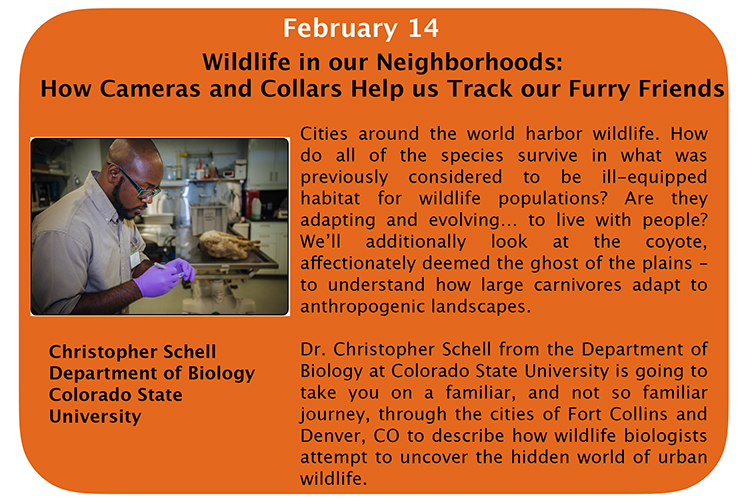
How do cameras and collars help us track urban wildlife? Christopher Schell from CSU’s Department of Biology will discuss coyotes and other species, how they are studied, and how they adapt to anthropogenic landscapes at the next Teen Science Café on Feb. 14.
The Front Range Teen Science Café is part of a larger national network of science cafés for teens. ESMEI’S Teen Science Café brings scientists and teens together for a conversation about science in a local coffee shop, Everyday Joe’s Coffee House. A primary goal of the café is for teens to increase their understanding of the nature of science and to develop a realistic perception of scientists and the lives they lead — which they sometimes do not get in school.
When: 5-7 p.m., with the presentation starting at 5:30 p.m., Wednesday, Feb. 14
Where: Everyday Joe’s Coffee House, 144 S. Mason St., Fort Collins
Presenter: Christopher Schell from CSU’s Department of Biology
RSVP to the Feb. 14 Teen Science Café here.
Feb. 14 Teen Science Café flier
January 18, 2018
SOURCE: Prof. A.R. Ravishankara receives U.N. Scientific Leadership award
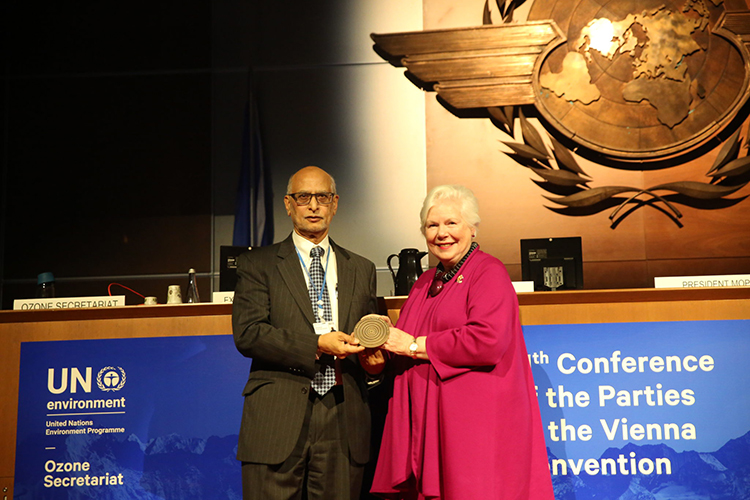
This past autumn A.R. Ravishankara, a professor in the Department of Chemistry and the Department of Atmospheric Science at Colorado State University, received an international Scientific Leadership award from the United Nations Environment Programme (UNEP), the agency that coordinates the U.N.’s environmental activities.
The award recognized Ravishankara’s lifelong work studying and finding solutions to climate change and ozone layer depletion. The honor was presented at a ceremony in Montreal on the 30th anniversary of the Montreal Protocol, the international treaty that phased out ozone-harming chlorofluorocarbons, or CFCs.
Read the full SOURCE article, “Professor A.R. Ravishankara receives U.N. Scientific Leadership award”
January 17, 2018
Stacey Hitchcock awarded 3rd place for poster at AMS meeting
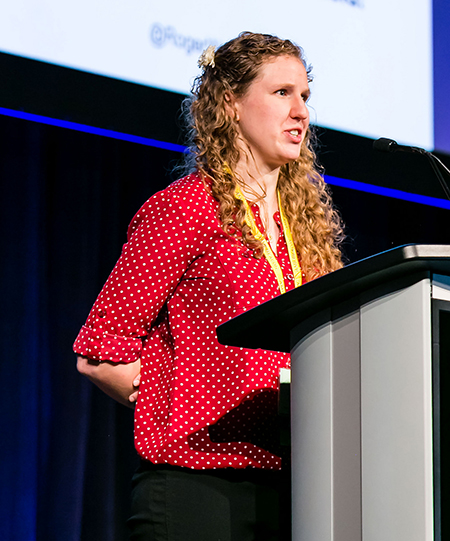
Stacey Hitchcock, advised by Russ Schumacher, was awarded third place for her poster “Impacts of Low-Level Stability on MCS Propagation” at the 2018 AMS Annual Meeting in Austin. Hitchcock presented her poster at the PECAN Symposium.
Hitchcock’s letter from the symposium co-conveners, informing her of the honor, stated:
“The judges and other attendees were all impressed with the depth and quality of your research and presentation. Great job! We look forward to seeing more results from your work as you continue your PECAN research.”
Photo at top: Stacey Hitchcock speaks at the 2018 AMS Annual Meeting.
January 12, 2018
Sue van den Heever, Melissa Burt receive awards at AMS Annual Meeting
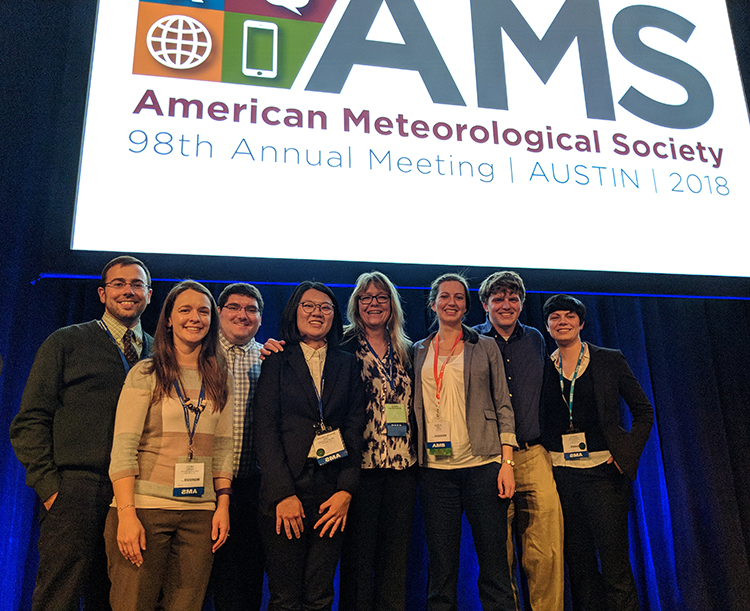
Prof. Sue van den Heever and Melissa Burt received American Meteorological Society awards at the organization’s annual meeting in Austin, Texas, January 8-12. Van den Heever was honored as the 2018 recipient of the Edward N. Lorenz Teaching Excellence Award, and Melissa Burt was given the Commission on Professional Affairs Award for Early Career Achievement.
One person is chosen annually for the highly competitive Edward N. Lorenz Teaching Excellence Award. A nomination letter and three supporting letters were required for consideration, with at least one of the supporting letters from a former student. As stated on the AMS web page listing the 2018 award winners, van den Heever was honored “for enduring passion for teaching and mentoring, for engaging students both inside and outside the classroom, and for unrelenting dedication to training future scientists.”
Burt is a research scientist with Prof. David Randall and the Education and Diversity Manager for the Department of Atmospheric Science and the Walter Scott, Jr. College of Engineering. She coordinates ESMEI’s (Earth System Modeling and Education Institute) Research Experiences for Undergraduates (REU) and the Front Range Teen Science Café programs. She earned her Ph.D. in Atmospheric Science from CSU in 2016.
According to the selection panel, Burt’s “work across a variety of AMS boards and committees, as a manager for education and diversity at CMMAP, and administration of an REU program, are just small parts of her already-large-and-growing involvement in our field. She has accomplished all of these things even while completing her doctorate at a top university, which clearly demonstrates, as one of the supporting letters said, ‘Dr. Burt really integrates all the aspects of excellence’ — research, mentoring, education, and service.”
Read more about van den Heever’s award.
Photo at top: Prof. Sue van den Heever, center, is pictured with some of her students.
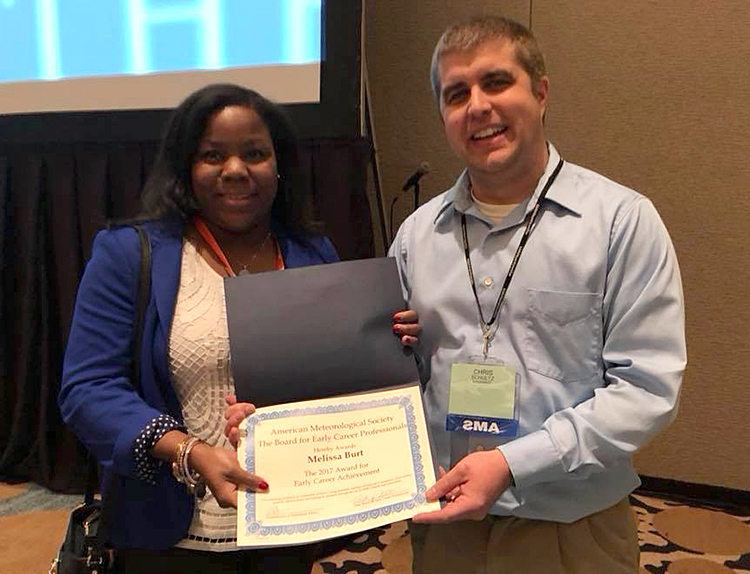
Melissa Burt receives the AMS Early Career Achievement Award from Chris Schultz, chair of the AMS Board of Early Career Professionals.
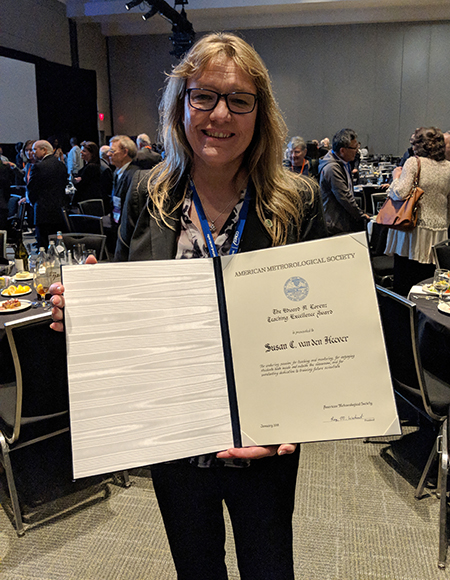
Sue van den Heever with her award.
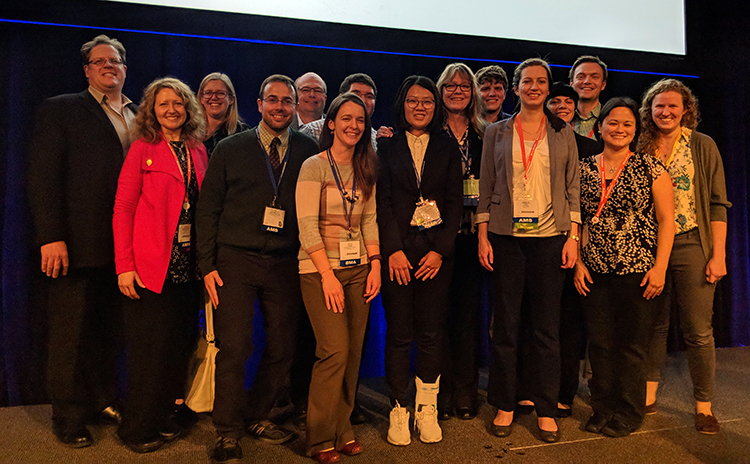
Sue van den Heever stands with the CSU contingent present for her award ceremony at the AMS Annual Meeting.
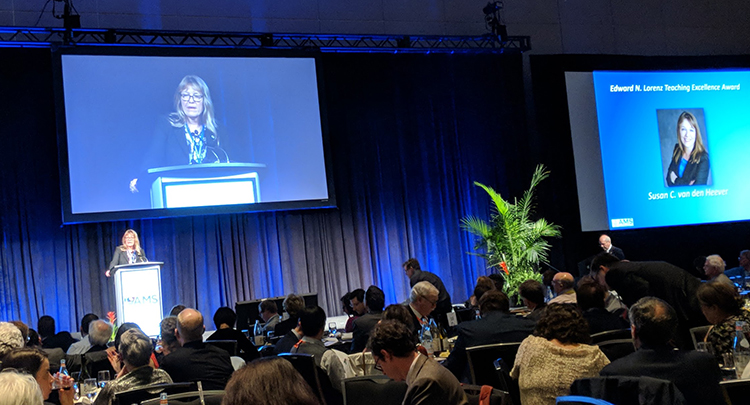
Sue van den Heever speaks after accepting the Lorenz Teaching Excellence Award at the 2018 AMS Annual Meeting.
January 8, 2018
Retired colonel will discuss weather and the Air Force at FORTCAST talk

Lt. Colonel Bill Darling will discuss U.S. Air Force Combat Weather at the first FORTCAST What’s Brewing in Weather and Climate talk of 2018. Darling will talk about the history and structure of USAF Combat Weather, the role of Special Operations Weather Technicians (SOWTs), and some of the missions with which he has been involved.
Darling retired from the Air Force in 2010 after 31 years of service, most recently as commander of the 208th Combat Weather Team. During his military career, Darling deployed as the combatant commander to contingency operations in 22 countries, supporting Operation Desert Shield, Operation Desert Storm, Operation Noble Eagle, Operation Enduring Freedom, Operation Joint Guardian, Operation Iraqi Freedom, Operation Southern Watch, the Global War on Terrorism, Joint Task Force Katrina, Crisis Action Team and Operation Cope Thunder.
Discussion will begin at 6:30 p.m. Tuesday, Jan. 30, upstairs at Tap & Handle. Please RSVP here. CSU students, bring your ID for $2 off drafts.
Contact fortcast@atmos.colostate.edu with any questions.

















